6.3 Steps in a Successful Marketing Research Plan
Learning outcomes.
By the end of this section, you will be able to:
- 1 Identify and describe the steps in a marketing research plan.
- 2 Discuss the different types of data research.
- 3 Explain how data is analyzed.
- 4 Discuss the importance of effective research reports.

Define the Problem
There are seven steps to a successful marketing research project (see Figure 6.3 ). Each step will be explained as we investigate how a marketing research project is conducted.
The first step, defining the problem, is often a realization that more information is needed in order to make a data-driven decision. Problem definition is the realization that there is an issue that needs to be addressed. An entrepreneur may be interested in opening a small business but must first define the problem that is to be investigated. A marketing research problem in this example is to discover the needs of the community and also to identify a potentially successful business venture.
Many times, researchers define a research question or objectives in this first step. Objectives of this research study could include: identify a new business that would be successful in the community in question, determine the size and composition of a target market for the business venture, and collect any relevant primary and secondary data that would support such a venture. At this point, the definition of the problem may be “Why are cat owners not buying our new cat toy subscription service?”
Additionally, during this first step we would want to investigate our target population for research. This is similar to a target market, as it is the group that comprises the population of interest for the study. In order to have a successful research outcome, the researcher should start with an understanding of the problem in the current situational environment.
Develop the Research Plan
Step two is to develop the research plan. What type of research is necessary to meet the established objectives of the first step? How will this data be collected? Additionally, what is the time frame of the research and budget to consider? If you must have information in the next week, a different plan would be implemented than in a situation where several months were allowed. These are issues that a researcher should address in order to meet the needs identified.
Research is often classified as coming from one of two types of data: primary and secondary. Primary data is unique information that is collected by the specific researcher with the current project in mind. This type of research doesn’t currently exist until it is pulled together for the project. Examples of primary data collection include survey, observation, experiment, or focus group data that is gathered for the current project.
Secondary data is any research that was completed for another purpose but can be used to help inform the research process. Secondary data comes in many forms and includes census data, journal articles, previously collected survey or focus group data of related topics, and compiled company data. Secondary data may be internal, such as the company’s sales records for a previous quarter, or external, such as an industry report of all related product sales. Syndicated data , a type of external secondary data, is available through subscription services and is utilized by many marketers. As you can see in Table 6.1 , primary and secondary data features are often opposite—the positive aspects of primary data are the negative side of secondary data.
There are four research types that can be used: exploratory, descriptive, experimental, and ethnographic research designs (see Figure 6.4 ). Each type has specific formats of data that can be collected. Qualitative research can be shared through words, descriptions, and open-ended comments. Qualitative data gives context but cannot be reduced to a statistic. Qualitative data examples are categorical and include case studies, diary accounts, interviews, focus groups, and open-ended surveys. By comparison, quantitative data is data that can be reduced to number of responses. The number of responses to each answer on a multiple-choice question is quantitative data. Quantitative data is numerical and includes things like age, income, group size, and height.
Exploratory research is usually used when additional general information in desired about a topic. When in the initial steps of a new project, understanding the landscape is essential, so exploratory research helps the researcher to learn more about the general nature of the industry. Exploratory research can be collected through focus groups, interviews, and review of secondary data. When examining an exploratory research design, the best use is when your company hopes to collect data that is generally qualitative in nature. 7
For instance, if a company is considering a new service for registered users but is not quite sure how well the new service will be received or wants to gain clarity of exactly how customers may use a future service, the company can host a focus group. Focus groups and interviews will be examined later in the chapter. The insights collected during the focus group can assist the company when designing the service, help to inform promotional campaign options, and verify that the service is going to be a viable option for the company.
Descriptive research design takes a bigger step into collection of data through primary research complemented by secondary data. Descriptive research helps explain the market situation and define an “opinion, attitude, or behavior” of a group of consumers, employees, or other interested groups. 8 The most common method of deploying a descriptive research design is through the use of a survey. Several types of surveys will be defined later in this chapter. Descriptive data is quantitative in nature, meaning the data can be distilled into a statistic, such as in a table or chart.
Again, descriptive data is helpful in explaining the current situation. In the opening example of LEGO , the company wanted to describe the situation regarding children’s use of its product. In order to gather a large group of opinions, a survey was created. The data that was collected through this survey allowed the company to measure the existing perceptions of parents so that alterations could be made to future plans for the company.
Experimental research , also known as causal research , helps to define a cause-and-effect relationship between two or more factors. This type of research goes beyond a correlation to determine which feature caused the reaction. Researchers generally use some type of experimental design to determine a causal relationship. An example is A/B testing, a situation where one group of research participants, group A, is exposed to one treatment and then compared to the group B participants, who experience a different situation. An example might be showing two different television commercials to a panel of consumers and then measuring the difference in perception of the product. Another example would be to have two separate packaging options available in different markets. This research would answer the question “Does one design sell better than the other?” Comparing that to the sales in each market would be part of a causal research study. 9
The final method of collecting data is through an ethnographic design. Ethnographic research is conducted in the field by watching people interact in their natural environment. For marketing research, ethnographic designs help to identify how a product is used, what actions are included in a selection, or how the consumer interacts with the product. 10
Examples of ethnographic research would be to observe how a consumer uses a particular product, such as baking soda. Although many people buy baking soda, its uses are vast. So are they using it as a refrigerator deodorizer, a toothpaste, to polish a belt buckle, or to use in baking a cake?
Select the Data Collection Method
Data collection is the systematic gathering of information that addresses the identified problem. What is the best method to do that? Picking the right method of collecting data requires that the researcher understand the target population and the design picked in the previous step. There is no perfect method; each method has both advantages and disadvantages, so it’s essential that the researcher understand the target population of the research and the research objectives in order to pick the best option.
Sometimes the data desired is best collected by watching the actions of consumers. For instance, how many cars pass a specific billboard in a day? What website led a potential customer to the company’s website? When are consumers most likely to use the snack vending machines at work? What time of day has the highest traffic on a social media post? What is the most streamed television program this week? Observational research is the collecting of data based on actions taken by those observed. Many data observations do not require the researched individuals to participate in the data collection effort to be highly valuable. Some observation requires an individual to watch and record the activities of the target population through personal observations .
Unobtrusive observation happens when those being observed aren’t aware that they are being watched. An example of an unobtrusive observation would be to watch how shoppers interact with a new stuffed animal display by using a one-way mirror. Marketers can identify which products were handled more often while also determining which were ignored.
Other methods can use technology to collect the data instead. Instances of mechanical observation include the use of vehicle recorders, which count the number of vehicles that pass a specific location. Computers can also assess the number of shoppers who enter a store, the most popular entry point for train station commuters, or the peak time for cars to park in a parking garage.
When you want to get a more in-depth response from research participants, one method is to complete a one-on-one interview . One-on-one interviews allow the researcher to ask specific questions that match the respondent’s unique perspective as well as follow-up questions that piggyback on responses already completed. An interview allows the researcher to have a deeper understanding of the needs of the respondent, which is another strength of this type of data collection. The downside of personal interviews it that a discussion can be very time-consuming and results in only one respondent’s answers. Therefore, in order to get a large sample of respondents, the interview method may not be the most efficient method.
Taking the benefits of an interview and applying them to a small group of people is the design of a focus group . A focus group is a small number of people, usually 8 to 12, who meet the sample requirements. These individuals together are asked a series of questions where they are encouraged to build upon each other’s responses, either by agreeing or disagreeing with the other group members. Focus groups are similar to interviews in that they allow the researcher, through a moderator, to get more detailed information from a small group of potential customers (see Figure 6.5 ).
Link to Learning
Focus groups.
Focus groups are a common method for gathering insights into consumer thinking and habits. Companies will use this information to develop or shift their initiatives. The best way to understand a focus group is to watch a few examples or explanations. TED-Ed has this video that explains how focus groups work.
You might be asking when it is best to use a focus group or a survey. Learn the differences, the pros and cons of each, and the specific types of questions you ask in both situations in this article .
Preparing for a focus group is critical to success. It requires knowing the material and questions while also managing the group of people. Watch this video to learn more about how to prepare for a focus group and the types of things to be aware of.
One of the benefits of a focus group over individual interviews is that synergy can be generated when a participant builds on another’s ideas. Additionally, for the same amount of time, a researcher can hear from multiple respondents instead of just one. 11 Of course, as with every method of data collection, there are downsides to a focus group as well. Focus groups have the potential to be overwhelmed by one or two aggressive personalities, and the format can discourage more reserved individuals from speaking up. Finally, like interviews, the responses in a focus group are qualitative in nature and are difficult to distill into an easy statistic or two.
Combining a variety of questions on one instrument is called a survey or questionnaire . Collecting primary data is commonly done through surveys due to their versatility. A survey allows the researcher to ask the same set of questions of a large group of respondents. Response rates of surveys are calculated by dividing the number of surveys completed by the total number attempted. Surveys are flexible and can collect a variety of quantitative and qualitative data. Questions can include simplified yes or no questions, select all that apply, questions that are on a scale, or a variety of open-ended types of questions. There are four types of surveys (see Table 6.2 ) we will cover, each with strengths and weaknesses defined.
Let’s start off with mailed surveys —surveys that are sent to potential respondents through a mail service. Mailed surveys used to be more commonly used due to the ability to reach every household. In some instances, a mailed survey is still the best way to collect data. For example, every 10 years the United States conducts a census of its population (see Figure 6.6 ). The first step in that data collection is to send every household a survey through the US Postal Service (USPS). The benefit is that respondents can complete and return the survey at their convenience. The downside of mailed surveys are expense and timeliness of responses. A mailed survey requires postage, both when it is sent to the recipient and when it is returned. That, along with the cost of printing, paper, and both sending and return envelopes, adds up quickly. Additionally, physically mailing surveys takes time. One method of reducing cost is to send with bulk-rate postage, but that slows down the delivery of the survey. Also, because of the convenience to the respondent, completed surveys may be returned several weeks after being sent. Finally, some mailed survey data must be manually entered into the analysis software, which can cause delays or issues due to entry errors.
Phone surveys are completed during a phone conversation with the respondent. Although the traditional phone survey requires a data collector to talk with the participant, current technology allows for computer-assisted voice surveys or surveys to be completed by asking the respondent to push a specific button for each potential answer. Phone surveys are time intensive but allow the respondent to ask questions and the surveyor to request additional information or clarification on a question if warranted. Phone surveys require the respondent to complete the survey simultaneously with the collector, which is a limitation as there are restrictions for when phone calls are allowed. According to Telephone Consumer Protection Act , approved by Congress in 1991, no calls can be made prior to 8:00 a.m. or after 9:00 p.m. in the recipient’s time zone. 12 Many restrictions are outlined in this original legislation and have been added to since due to ever-changing technology.
In-person surveys are when the respondent and data collector are physically in the same location. In-person surveys allow the respondent to share specific information, ask questions of the surveyor, and follow up on previous answers. Surveys collected through this method can take place in a variety of ways: through door-to-door collection, in a public location, or at a person’s workplace. Although in-person surveys are time intensive and require more labor to collect data than some other methods, in some cases it’s the best way to collect the required data. In-person surveys conducted through a door-to-door method is the follow-up used for the census if respondents do not complete the mailed survey. One of the downsides of in-person surveys is the reluctance of potential respondents to stop their current activity and answer questions. Furthermore, people may not feel comfortable sharing private or personal information during a face-to-face conversation.
Electronic surveys are sent or collected through digital means and is an opportunity that can be added to any of the above methods as well as some new delivery options. Surveys can be sent through email, and respondents can either reply to the email or open a hyperlink to an online survey (see Figure 6.7 ). Additionally, a letter can be mailed that asks members of the survey sample to log in to a website rather than to return a mailed response. Many marketers now use links, QR codes, or electronic devices to easily connect to a survey. Digitally collected data has the benefit of being less time intensive and is often a more economical way to gather and input responses than more manual methods. A survey that could take months to collect through the mail can be completed within a week through digital means.
Design the Sample
Although you might want to include every possible person who matches your target market in your research, it’s often not a feasible option, nor is it of value. If you did decide to include everyone, you would be completing a census of the population. Getting everyone to participate would be time-consuming and highly expensive, so instead marketers use a sample , whereby a portion of the whole is included in the research. It’s similar to the samples you might receive at the grocery store or ice cream shop; it isn’t a full serving, but it does give you a good taste of what the whole would be like.
So how do you know who should be included in the sample? Researchers identify parameters for their studies, called sample frames . A sample frame for one study may be college students who live on campus; for another study, it may be retired people in Dallas, Texas, or small-business owners who have fewer than 10 employees. The individual entities within the sampling frame would be considered a sampling unit . A sampling unit is each individual respondent that would be considered as matching the sample frame established by the research. If a researcher wants businesses to participate in a study, then businesses would be the sampling unit in that case.
The number of sampling units included in the research is the sample size . Many calculations can be conducted to indicate what the correct size of the sample should be. Issues to consider are the size of the population, the confidence level that the data represents the entire population, the ease of accessing the units in the frame, and the budget allocated for the research.
There are two main categories of samples: probability and nonprobability (see Figure 6.8 ). Probability samples are those in which every member of the sample has an identified likelihood of being selected. Several probability sample methods can be utilized. One probability sampling technique is called a simple random sample , where not only does every person have an identified likelihood of being selected to be in the sample, but every person also has an equal chance of exclusion. An example of a simple random sample would be to put the names of all members of a group into a hat and simply draw out a specific number to be included. You could say a raffle would be a good example of a simple random sample.
Another probability sample type is a stratified random sample , where the population is divided into groups by category and then a random sample of each category is selected to participate. For instance, if you were conducting a study of college students from your school and wanted to make sure you had all grade levels included, you might take the names of all students and split them into different groups by grade level—freshman, sophomore, junior, and senior. Then, from those categories, you would draw names out of each of the pools, or strata.
A nonprobability sample is a situation in which each potential member of the sample has an unknown likelihood of being selected in the sample. Research findings that are from a nonprobability sample cannot be applied beyond the sample. Several examples of nonprobability sampling are available to researchers and include two that we will look at more closely: convenience sampling and judgment sampling.
The first nonprobability sampling technique is a convenience sample . Just like it sounds, a convenience sample is when the researcher finds a group through a nonscientific method by picking potential research participants in a convenient manner. An example might be to ask other students in a class you are taking to complete a survey that you are doing for a class assignment or passing out surveys at a basketball game or theater performance.
A judgment sample is a type of nonprobability sample that allows the researcher to determine if they believe the individual meets the criteria set for the sample frame to complete the research. For instance, you may be interested in researching mothers, so you sit outside a toy store and ask an individual who is carrying a baby to participate.
Collect the Data
Now that all the plans have been established, the instrument has been created, and the group of participants has been identified, it is time to start collecting data. As explained earlier in this chapter, data collection is the process of gathering information from a variety of sources that will satisfy the research objectives defined in step one. Data collection can be as simple as sending out an email with a survey link enclosed or as complex as an experiment with hundreds of consumers. The method of collection directly influences the length of this process. Conducting personal interviews or completing an experiment, as previously mentioned, can add weeks or months to the research process, whereas sending out an electronic survey may allow a researcher to collect the necessary data in a few days. 13
Analyze and Interpret the Data
Once the data has been collected, the process of analyzing it may begin. Data analysis is the distillation of the information into a more understandable and actionable format. The analysis itself can take many forms, from the use of basic statistics to a more comprehensive data visualization process. First, let’s discuss some basic statistics that can be used to represent data.
The first is the mean of quantitative data. A mean is often defined as the arithmetic average of values. The formula is:
A common use of the mean calculation is with exam scores. Say, for example, you have earned the following scores on your marketing exams: 72, 85, 68, and 77. To find the mean, you would add up the four scores for a total of 302. Then, in order to generate a mean, that number needs to be divided by the number of exam scores included, which is 4. The mean would be 302 divided by 4, for a mean test score of 75.5. Understanding the mean can help to determine, with one number, the weight of a particular value.
Another commonly used statistic is median. The median is often referred to as the middle number. To generate a median, all the numeric answers are placed in order, and the middle number is the median. Median is a common statistic when identifying the income level of a specific geographic region. 14 For instance, the median household income for Albuquerque, New Mexico, between 2015 and 2019 was $52,911. 15 In this case, there are just as many people with an income above the amount as there are below.
Mode is another statistic that is used to represent data of all types, as it can be used with quantitative or qualitative data and represents the most frequent answer. Eye color, hair color, and vehicle color can all be presented with a mode statistic. Additionally, some researchers expand on the concept of mode and present the frequency of all responses, not just identifying the most common response. Data such as this can easily be presented in a frequency graph, 16 such as the one in Figure 6.9 .
Additionally, researchers use other analyses to represent the data rather than to present the entirety of each response. For example, maybe the relationship between two values is important to understand. In this case, the researcher may share the data as a cross tabulation (see Figure 6.10 ). Below is the same data as above regarding social media use cross tabulated with gender—as you can see, the data is more descriptive when you can distinguish between the gender identifiers and how much time is spent per day on social media.
Not all data can be presented in a graphical format due to the nature of the information. Sometimes with qualitative methods of data collection, the responses cannot be distilled into a simple statistic or graph. In that case, the use of quotations, otherwise known as verbatims , can be used. These are direct statements presented by the respondents. Often you will see a verbatim statement when reading a movie or book review. The critic’s statements are used in part or in whole to represent their feelings about the newly released item.
Infographics
As they say, a picture is worth a thousand words. For this reason, research results are often shown in a graphical format in which data can be taken in quickly, called an infographic .
Check out this infographic on what components make for a good infographic. As you can see, a good infographic needs four components: data, design, a story, and the ability to share it with others. Without all four pieces, it is not as valuable a resource as it could be. The ultimate infographic is represented as the intersection of all four.
Infographics are particularly advantageous online. Refer to this infographic on why they are beneficial to use online .
Prepare the Research Report
The marketing research process concludes by sharing the generated data and makes recommendations for future actions. What starts as simple data must be interpreted into an analysis. All information gathered should be conveyed in order to make decisions for future marketing actions. One item that is often part of the final step is to discuss areas that may have been missed with the current project or any area of further study identified while completing it. Without the final step of the marketing research project, the first six steps are without value. It is only after the information is shared, through a formal presentation or report, that those recommendations can be implemented and improvements made. The first six steps are used to generate information, while the last is to initiate action. During this last step is also when an evaluation of the process is conducted. If this research were to be completed again, how would we do it differently? Did the right questions get answered with the survey questions posed to the respondents? Follow-up on some of these key questions can lead to additional research, a different study, or further analysis of data collected.
Methods of Quantifying Marketing Research
One of the ways of sharing information gained through marketing research is to quantify the research . Quantifying the research means to take a variety of data and compile into a quantity that is more easily understood. This is a simple process if you want to know how many people attended a basketball game, but if you want to quantify the number of students who made a positive comment on a questionnaire, it can be a little more complicated. Researchers have a variety of methods to collect and then share these different scores. Below are some of the most common types used in business.
Is a customer aware of a product, brand, or company? What is meant by awareness? Awareness in the context of marketing research is when a consumer is familiar with the product, brand, or company. It does not assume that the consumer has tried the product or has purchased it. Consumers are just aware. That is a measure that many businesses find valuable. There are several ways to measure awareness. For instance, the first type of awareness is unaided awareness . This type of awareness is when no prompts for a product, brand, or company are given. If you were collecting information on fast-food restaurants, you might ask a respondent to list all the fast-food restaurants that serve a chicken sandwich. Aided awareness would be providing a list of products, brands, or companies and the respondent selects from the list. For instance, if you give a respondent a list of fast-food restaurants and ask them to mark all the locations with a chicken sandwich, you are collecting data through an aided method. Collecting these answers helps a company determine how the business location compares to those of its competitors. 17
Customer Satisfaction (CSAT)
Have you ever been asked to complete a survey at the end of a purchase? Many businesses complete research on buying, returning, or other customer service processes. A customer satisfaction score , also known as CSAT, is a measure of how satisfied customers are with the product, brand, or service. A CSAT score is usually on a scale of 0 to 100 percent. 18 But what constitutes a “good” CSAT score? Although what is identified as good can vary by industry, normally anything in the range from 75 to 85 would be considered good. Of course, a number higher than 85 would be considered exceptional. 19
Customer Acquisition Cost (CAC) and Customer Effort Score (CES)
Other metrics often used are a customer acquisition cost (CAC) and customer effort score (CES). How much does it cost a company to gain customers? That’s the purpose of calculating the customer acquisition cost. To calculate the customer acquisition cost , a company would need to total all expenses that were accrued to gain new customers. This would include any advertising, public relations, social media postings, etc. When a total cost is determined, it is divided by the number of new customers gained through this campaign.
The final score to discuss is the customer effort score , also known as a CES. The CES is a “survey used to measure the ease of service experience with an organization.” 20 Companies that are easy to work with have a better CES than a company that is notorious for being difficult. An example would be to ask a consumer about the ease of making a purchase online by incorporating a one-question survey after a purchase is confirmed. If a number of responses come back negative or slightly negative, the company will realize that it needs to investigate and develop a more user-friendly process.
Knowledge Check
It’s time to check your knowledge on the concepts presented in this section. Refer to the Answer Key at the end of the book for feedback.
- Defining the problem
- Developing the research plan
- Selecting a data collection method
- Designing the sample
- you are able to send it to all households in an area
- it is inexpensive
- responses are automatically loaded into the software
- the data comes in quickly
- Primary data
- Secondary data
- Secondary and primary data
- Professional data
- It shows how respondents answered two variables in relation to each other and can help determine patterns by different groups of respondents.
- By presenting the data in the form of a picture, the information is easier for the reader to understand.
- It is an easy way to see how often one answer is selected by the respondents.
- This analysis can used to present interview or focus group data.
This book may not be used in the training of large language models or otherwise be ingested into large language models or generative AI offerings without OpenStax's permission.
Want to cite, share, or modify this book? This book uses the Creative Commons Attribution License and you must attribute OpenStax.
Access for free at https://openstax.org/books/principles-marketing/pages/1-unit-introduction
- Authors: Dr. Maria Gomez Albrecht, Dr. Mark Green, Linda Hoffman
- Publisher/website: OpenStax
- Book title: Principles of Marketing
- Publication date: Jan 25, 2023
- Location: Houston, Texas
- Book URL: https://openstax.org/books/principles-marketing/pages/1-unit-introduction
- Section URL: https://openstax.org/books/principles-marketing/pages/6-3-steps-in-a-successful-marketing-research-plan
© Jan 9, 2024 OpenStax. Textbook content produced by OpenStax is licensed under a Creative Commons Attribution License . The OpenStax name, OpenStax logo, OpenStax book covers, OpenStax CNX name, and OpenStax CNX logo are not subject to the Creative Commons license and may not be reproduced without the prior and express written consent of Rice University.
- Starting a Business
Our Top Picks
- Best Small Business Loans
- Best Business Internet Service
- Best Online Payroll Service
- Best Business Phone Systems
Our In-Depth Reviews
- OnPay Payroll Review
- ADP Payroll Review
- Ooma Office Review
- RingCentral Review
Explore More
- Business Solutions
- Entrepreneurship
- Franchising
- Best Accounting Software
- Best Merchant Services Providers
- Best Credit Card Processors
- Best Mobile Credit Card Processors
- Clover Review
- Merchant One Review
- QuickBooks Online Review
- Xero Accounting Review
- Financial Solutions
Human Resources
- Best Human Resources Outsourcing Services
- Best Time and Attendance Software
- Best PEO Services
- Best Business Employee Retirement Plans
- Bambee Review
- Rippling HR Software Review
- TriNet Review
- Gusto Payroll Review
- HR Solutions
Marketing and Sales
- Best Text Message Marketing Services
- Best CRM Software
- Best Email Marketing Services
- Best Website Builders
- Textedly Review
- Salesforce Review
- EZ Texting Review
- Textline Review
- Business Intelligence
- Marketing Solutions
- Marketing Strategy
- Public Relations
- Social Media
- Best GPS Fleet Management Software
- Best POS Systems
- Best Employee Monitoring Software
- Best Document Management Software
- Verizon Connect Fleet GPS Review
- Zoom Review
- Samsara Review
- Zoho CRM Review
- Technology Solutions
Business Basics
- 4 Simple Steps to Valuing Your Small Business
- How to Write a Business Growth Plan
- 12 Business Skills You Need to Master
- How to Start a One-Person Business
- FreshBooks vs. QuickBooks Comparison
- Salesforce CRM vs. Zoho CRM
- RingCentral vs. Zoom Comparison
- 10 Ways to Generate More Sales Leads
Business.com aims to help business owners make informed decisions to support and grow their companies. We research and recommend products and services suitable for various business types, investing thousands of hours each year in this process.
As a business, we need to generate revenue to sustain our content. We have financial relationships with some companies we cover, earning commissions when readers purchase from our partners or share information about their needs. These relationships do not dictate our advice and recommendations. Our editorial team independently evaluates and recommends products and services based on their research and expertise. Learn more about our process and partners here .
How to Create a Market Research Plan
Before starting a business, you want to fully research your idea. A market research plan will help you understand your competition, the marketplace and more.

Table of Contents
While having a great idea is an important part of establishing a business, you’ll only get so far without laying the proper groundwork. To help your business take off, not only do you need to size up the competition, but you also need to identify who will buy your product, how much it will cost, the best approach to selling it and how many people will demand it.
To get answers to these questions, you’ll need a market research plan, which you can create yourself or pay a specialist to create for you. Market research plans define an existing problem and/or outline an opportunity. From there, the marketing strategy is broken down task by task. Your plan should include objectives and the methods that you’ll use to achieve those objectives, along with a time frame for completing the work.
What should a market research plan include?
A market research plan should provide a thorough examination of how your product or service will fare in a defined area. It should include:
- An examination of the current marketplace and an analysis of the need for your product or service: To know where you fit in the market, it’s important to have a broad understanding of your industry — covering everything from its annual revenue to the industry standards to the total number of businesses operating within it. Start by gathering statistical data from sources like the U.S. Bureau of Labor Statistics and BMI Research and consider the industry’s market size, potential customer base and how external factors such as laws, technology, world events and socioeconomic changes impact it.
- An assessment of the competition: By analyzing your competitors, you can discover strategies to fill market gaps. This involves identifying well-known competitors and noting trends they employ successfully, scrutinizing customer feedback about businesses in your sector, such as through online reviews, and understanding competitors’ product or service offerings. This knowledge can then guide the refinement of your own products or services to differentiate them from others in the market.
- Data about customers: Identify which segment of potential customers in your industry you can effectively target, considering their demographics — such as age, ethnicity, income and location and psychographics, including beliefs, values and lifestyle. Learn about the challenges your customers face in their daily lives and determine how the features and benefits of your offerings address their needs.
- The direction for your marketing in the upcoming year: Your plan should provide a clear roadmap for your marketing strategies for the next year, focusing on approaches to distinguish your brand from competitors. Develop marketing messages that resonate with and display empathy toward your target market and find ways to address customers’ needs and demonstrate value.
- Goals to be met: Outline goals your business would like to achieve and make these goals clear to all employees on your team. Create goals that are realistic and attainable while also making a meaningful impact on the business’s growth. Consider factors including your target number of products or services, the expected number of units to sell based on market size, target market behavior, pricing for each item and the cost of production and advertising.
How to create your market research plan
Doing business without having a marketing plan is like driving without directions. You may eventually reach your destination, but there will be many costly and time-consuming mistakes made along the way.
Many entrepreneurs mistakenly believe there is a big demand for their service or product but, in reality, there may not be, your prices may be too high or too low or you may be going into a business with so many restrictions that it’s almost impossible to be successful. A market research plan will help you uncover significant issues or roadblocks.
Step 1. Conduct a comprehensive situation analysis.
One of the first steps in constructing your marketing plan is to create a strengths, weaknesses, opportunities and threats (SWOT) analysis , which is used to identify your competition, to know how they operate and then to understand their strengths and weaknesses.
Step 2: Develop clear marketing objectives.
In this section, describe the desired outcome for your marketing plan with realistic and attainable objectives, the targets and a clear and concise time frame. The most common way to approach this is with marketing objectives, which may include the total number of customers and the retention rate, the average volume of purchases, total market share and the proportion of your potential market that makes purchases.
Step 3: Make a financial plan.
A financial plan is essentia l for creating a solid marketing plan. The financial plan answers a range of questions that are critical components of your business, such as how much you intend to sell, what will you charge, how much will it cost to deliver your services or produce your products, how much will it cost for your basic operating expenses and how much financing will you need to operate your business.
In your business plan, be sure to describe who you are, what your business will be about, your business goals and what your inspiration was to buy, begin or grow your business.
Step 4: Determine your target audience.
Once you know what makes you stand out from your competitors and how you’ll market yourself, you should decide who to target with all this information. That’s why your market research plan should delineate your target audience. What are their demographics and how will these qualities affect your plan? How do your company’s current products and services affect which consumers you can realistically make customers? Will that change in the future? All of these questions should be answered in your plan.
Step 5: List your research methods.
Rarely does one research avenue make for a comprehensive market research plan. Instead, your plan should indicate several methods that will be used to determine the market share you can realistically obtain. This way, you get as much information as possible from as many sources as possible. The result is a more robust path toward establishing the exact footprint you desire for your company.
Step 6: Establish a timeline.
With your plan in place, you’ll need to figure out how long your market research process will take. Project management charts are often helpful in this regard as they divide tasks and personnel over a timeframe that you have set. No matter which type of project management chart you use, try to build some flexibility into your timeframe. A two-week buffer toward the home stretch comes in handy when a process scheduled for one week takes two — that buffer will keep you on deadline.
Step 7: Acknowledge ethical concerns.
Market research always presents opportunities for ethical missteps. After all, you’ll need to obtain competitor information and sensitive financial data that may not always be readily available. Your market research plan should thus encourage your team to not take any dicey steps to obtain this information. It may be better to state, “we could not obtain this competitor information,” than to spy on the competitor or pressure their current employees for knowledge. Plus, there’s nothing wrong with simply feeling better about the final state of your plan and how you got it there.
Using a market research firm
If the thought of trying to create your own market research plan seems daunting or too time-consuming, there are plenty of other people willing to do the work for you.
Pros of using a market research firm
As an objective third party, businesses can benefit from a market research firm’s impartial perspective and guidance, helping to shape impactful brand strategies and marketing campaigns. These firms, which can help businesses with everything from their marketing campaigns to brand launches, deliver precise results, drawing on their expertise and experience to provide in-depth insights and solutions tailored specifically to your company’s needs.
Even more, working with a market research firm can elevate a brand above the competition, as they provide credible and unique research that is highly valued by the media, enhancing brand credibility and potentially increasing website traffic, social media shares and online visibility.
Cons of using a market research firm
Although hiring a firm can provide businesses with tremendous results, certain downsides can lead a business toward the do-it-yourself route. Most notably, market research firms can be a costly expense that some businesses can’t afford. However, businesses that can allocate the funds will likely see a positive return on investment, as they are paying for the expertise and proficiency of seasoned professionals in the field.
Additionally, finding the right market research firm for your business’s needs can take some time — and even longer, ranging from weeks to months, for a market research firm to complete a plan. This lack of immediate results can be detrimental for businesses that don’t have the time to wait.
Market research firms can charge into the thousands of dollars for a market research plan, but there are ways to get help more affordably, including:
- Outline your plans carefully and spell out objectives.
- Examine as many sources as possible.
- Before paying for any information, check with librarians, small business development centers or market research professors to see if they can help you access market research data for free.
- You may think you’ll need to spend a hefty sum to create a market research plan, but there are plenty of free and low-cost sources available, especially through university business schools that will guide you through the process.
Miranda Fraraccio contributed to this article.

Get Weekly 5-Minute Business Advice
B. newsletter is your digest of bite-sized news, thought & brand leadership, and entertainment. All in one email.
Our mission is to help you take your team, your business and your career to the next level. Whether you're here for product recommendations, research or career advice, we're happy you're here!
Ready to level up your insights?
Get ready to streamline, scale and supercharge your research. Fill out this form to request a demo of the InsightHub platform and discover the difference insights empowerment can make. A member of our team will reach out within two working days.
Cost effective insights that scale
Quality insight doesn't need to cost the earth. Our flexible approach helps you make the most of research budgets and build an agile solution that works for you. Fill out this form to request a call back from our team to explore our pricing options.
- What is InsightHub?
- Data Collection
- Data Analysis
- Data Activation
- Research Templates
- Information Security
- Our Expert Services
- Support & Education
- Consultative Services
- Insight Delivery
- Research Methods
- Sectors We Work With
- Meet the team
- Advisory Board
- Press & Media
- Book a Demo
- Request Pricing

Embark on a new adventure. Join Camp InsightHub, our free demo platform, to discover the future of research.

Read a brief overview of the agile research platform enabling brands to inform decisions at speed in this PDF.
InsightHub on the Blog
- Surveys, Video and the Changing Face of Agile Research
- Building a Research Technology Stack for Better Insights
- The Importance of Delegation in Managing Insight Activities
- Common Insight Platform Pitfalls (and How to Avoid Them)
- Support and Education
- Insight Delivery Services

Our services drive operational and strategic success in challenging environments. Find out how.

Close Connections bring stakeholders and customers together for candid, human conversations.
Services on the Blog
- Closing the Client-Agency Divide in Market Research
- How to Speed Up Fieldwork Without Compromising Quality
- Practical Ways to Support Real-Time Decision Making
- Developing a Question Oriented, Not Answer Oriented Culture
- Meet the Team

The FlexMR credentials deck provides a brief introduction to the team, our approach to research and previous work.

We are the insights empowerment company. Our framework addresses the major pressures insight teams face.
Latest News
- Insight as Art Shortlisted for AURA Innovation Award
- FlexMR Launch Video Close Connection Programme
- VideoMR Analysis Tool Added to InsightHub
- FlexMR Makes Shortlist for Quirks Research Supplier Award
- Latest Posts
- Strategic Thinking
- Technology & Trends
- Practical Application
- Insights Empowerment
- View Full Blog Archives

Discover how to build close customer connections to better support real-time decision making.

What is a market research and insights playbook, plus discover why should your team consider building one.
Featured Posts
- Five Strategies for Turning Insight into Action
- How to Design Surveys that Ask the Right Questions
- Scaling Creative Qual for Rich Customer Insight
- How to Measure Brand Awareness: The Complete Guide
- All Resources
- Client Stories
- Whitepapers
- Events & Webinars
- The Open Ideas Panel
- InsightHub Help Centre
- FlexMR Client Network

The insights empowerment readiness calculator measures your progress in building an insight-led culture.

The MRX Lab podcast explores new and novel ideas from the insights industry in 10 minutes or less.
Featured Stories
- Specsavers Informs Key Marketing Decisions with InsightHub
- The Coventry Panel Helps Maintain Award Winning CX
- Isagenix Customer Community Steers New Product Launch
- Curo Engage Residents with InsightHub Community
- Tech & Trends /
How to Write a Market Research Plan (+ Free Template)
Chris martin, how to use synthetic data in market research.
In recent years, the rapid advancement of technology and data analytics has revolutionised working p...
Dr Katharine Johnson
- Insights Empowerment (32)
- Practical Application (175)
- Research Methods (283)
- Strategic Thinking (201)
- Survey Templates (7)
- Tech & Trends (389)
A market research plan, similar to a brief, is a vital document that details important information about your market research project. Though it is often an overlooked step of the market research process , an effective plan is often a critical factor in determining whether or not your market research efforts are successful.
Why? Because a well-thought through plan, more so than objectives alone, can be a vital instrument in focusing your investment. It ensures you know, ahead of the commencement date, the timeline, budget and desired outcomes from the project. It can even be used as a tool for receiving quicker sign-off from management when embarking on a new venture.
But it’s also important to remember that the research plan is not just for your team. To make full use of this document, it should be written in a way that can be distributed to agency partners as well – ensuring that your insight team and specialist partners are all working towards the same goal.
Tips for Crafting a Successful Plan
The first rule of writing a successful market research plan is to keep it short. The perfect length is between 1-2 pages, but as an absolute maximum try to ensure that it never exceeds 3. This will give you enough space to explain the background, scope and practicalities of the project while ensuring it is concise enough to be read in full. Throughout these few short pages, the tone of your plan should be informative. Remember that you are outlining information that you already know.
Write in a way that holistically encompasses all aspects of the project. Throughout the duration of your scripting, data collection, analysis and reporting stages of your project you should always be referring back to this document in order to remain focused. As any researcher knows, one of the biggest challenges in any research project is staying true to your original objectives.
With both exploratory and confirmatory research alike, new information is likely to arise which may spark other ideas or bring light to previously unknown issues. Remember these, but set them aside for further investigation at a later date. Travelling too far down the rabbit hole is the quickest way to overspend and under deliver on your original goal.
The 10 Elements of the Best Research Plans
First, let me preface this with a reminder: every project is different. A long term co-creation community will have different needs and requirements to a customer feedback survey or ad testing project. However, despite this – it is important to give equal consideration to all projects, and plan each with the same high degree of meticulous care. With this in mind, these are the 10 key aspects we recommend that all research plans should include:
1. Overview
Use this first section to outline the background to the problem that you are attempting to solve. Include background information on the business to provide context, as well as the circumstances that have led to the need for research. Overviews should be limited to 200 words at most, with most of the word count dedicated to the business circumstances & challenges surrounding the research.
2. Objectives
Arguably the most important aspect of the entire document, objectives should be in bullet point format. List 3-5 of the decisions or initiatives that the research will inform – this will become the remit of the project. Below are a few examples of both well and poorly written objectives:
Well written research objectives:
- Understand the channels in which our customers are most comfortable shopping, in order to decide which should be prioritised in the 2017 Q1 budget
- Develop an active co-creation community that contributes 2 user-generated product improvements for testing to the R & D team per month
- Learn what is leading to an increase in customer churn so that a new retention strategy can be put in place within 12 weeks
Poorly written research objectives:
- Survey 1,000 potential customers to find out how our products can be improved
- Develop a panel of employees that are able to provide answers to research questions on an ad-hoc basis
- Learn how our company is perceived in comparison to competitors and how we can stand out in the marketplace
3. Deliverable outcomes
This section acts as a list what you expect to be produced at the end of the project. This can include, but is not limited to: a target number of responses you expect to receive, descriptions of how the data should be presented and the extent to which the data will be used to inform future decisions. In long term projects such as panels or communities, this may include a target for the amount of decisions that research is expected to inform and/or a pipeline for new ideas in exploratory studies.
4. Target audience
Different to sample, your target audience describes the population that you wish to research. This can be defined by a number of factors depending on the nature of your project. Some of the most common include: demographics, psychographics, life stages and company/ product interaction.
5. Sample plan
The sample plan should be used to indicate the amount of participants you wish to research, as well as a breakdown of each group. This will be affected by the choice to use qualitative, quantitative or multi-method approaches, as well as the estimated size of the target population.
6. Research Methods
List the different research methods that you plan to use in your project. This will be used by your team and agency partners to ensure that the insight you need comes from the most appropriate tools. Be sure to include any non-traditional methods you plan to use as well – it’s important that your team are aware of how data will be captured, even if it is being gathered by an experimental technique.
7. Timeline
These usually take the form of a Gantt chart, but can vary depending on the scope and length of your project. Try to break down tasks as much as possible but be wary of dependencies within your chart. Be sure to schedule enough time in case some research tasks over-run or response rates are lower than expected.
Perhaps the most dreaded aspect of any research plan, budgeting is never easy. But by providing a breakdown of costs and outlining which elements of the project require most investment, a well-planned budget can be a benefit rather than a hurdle.
9 & 10. Ethical and Further considerations
Finally, you should outline any ethical/ other considerations or issues that may arise throughout the course of your project. Whether these are as simple as a conflict of interest or a concern about supplier relationships – this is your chance to address any problems that may arise before they do.
Free Market Research Plan Template
Use this link to download our free market research plan template . The template comes complete with each of the sections outlined above, with instructions on usage and tips on how to make the most out of it. Currently available in .docx format, please email [email protected] if you have any problems with the download.
What do you believe should be included in a successful market research plan? Share your advice with us in the comments below and join the conversation.
About FlexMR
We are The Insights Empowerment Company. We help research, product and marketing teams drive informed decisions with efficient, scalable & impactful insight.
About Chris Martin
Chris is an experienced executive and marketing strategist in the insight and technology sectors. He also hosts our MRX Lab podcast.
Stay up to date
You might also like....

How to Use Synthetic Data in Market...
In recent years, the rapid advancement of technology and data analytics has revolutionised working practices in the market research industry. One significant and growing innovation to watch is the pro...

How Delivery Platforms Reshaped the...
Have you noticed how ordering food today feels like a whole new experience compared to a few years back? The restaurant and food delivery industry has been on quite a journey, and it’s amazing to see ...

Market Research Room 101: Round 2
On Thursday 9th May 2024, Team Russell and Team Hudson duelled in a panel debate modelled off the popular TV show Room 101. This mock-gameshow-style panel, hosted by Keen as Mustard Marketing's Lucy D...

Market Research: A How-To Guide and Template
Discover the different types of market research, how to conduct your own market research, and use a free template to help you along the way.

MARKET RESEARCH KIT
5 Research and Planning Templates + a Free Guide on How to Use Them in Your Market Research

Updated: 02/21/24
Published: 03/30/16
Today's consumers have a lot of power. As a business, you must have a deep understanding of who your buyers are and what influences their purchase decisions.
Enter: Market Research.
![research marketing plan → Download Now: Market Research Templates [Free Kit]](https://no-cache.hubspot.com/cta/default/53/6ba52ce7-bb69-4b63-965b-4ea21ba905da.png)
Whether you're new to market research or not, I created this guide to help you conduct a thorough study of your market, target audience, competition, and more. Let’s dive in.
Table of Contents
What is market research?
Primary vs. secondary research, types of market research, how to do market research, market research report template, market research examples.
Market research is the process of gathering information about your target market and customers to verify the success of a new product, help your team iterate on an existing product, or understand brand perception to ensure your team is effectively communicating your company's value effectively.
Market research can answer various questions about the state of an industry. But if you ask me, it's hardly a crystal ball that marketers can rely on for insights on their customers.
Market researchers investigate several areas of the market, and it can take weeks or even months to paint an accurate picture of the business landscape.
However, researching just one of those areas can make you more intuitive to who your buyers are and how to deliver value that no other business is offering them right now.
How? Consider these two things:
- Your competitors also have experienced individuals in the industry and a customer base. It‘s very possible that your immediate resources are, in many ways, equal to those of your competition’s immediate resources. Seeking a larger sample size for answers can provide a better edge.
- Your customers don't represent the attitudes of an entire market. They represent the attitudes of the part of the market that is already drawn to your brand.
The market research services market is growing rapidly, which signifies a strong interest in market research as we enter 2024. The market is expected to grow from roughly $75 billion in 2021 to $90.79 billion in 2025 .
.png)
Free Market Research Kit
- SWOT Analysis Template
- Survey Template
- Focus Group Template
Download Free
All fields are required.
You're all set!
Click this link to access this resource at any time.
Why do market research?
Market research allows you to meet your buyer where they are.
As our world becomes louder and demands more of our attention, this proves invaluable.
By understanding your buyer's problems, pain points, and desired solutions, you can aptly craft your product or service to naturally appeal to them.
Market research also provides insight into the following:
- Where your target audience and current customers conduct their product or service research
- Which of your competitors your target audience looks to for information, options, or purchases
- What's trending in your industry and in the eyes of your buyer
- Who makes up your market and what their challenges are
- What influences purchases and conversions among your target audience
- Consumer attitudes about a particular topic, pain, product, or brand
- Whether there‘s demand for the business initiatives you’re investing in
- Unaddressed or underserved customer needs that can be flipped into selling opportunity
- Attitudes about pricing for a particular product or service
Ultimately, market research allows you to get information from a larger sample size of your target audience, eliminating bias and assumptions so that you can get to the heart of consumer attitudes.
As a result, you can make better business decisions.
To give you an idea of how extensive market research can get , consider that it can either be qualitative or quantitative in nature — depending on the studies you conduct and what you're trying to learn about your industry.
Qualitative research is concerned with public opinion, and explores how the market feels about the products currently available in that market.
Quantitative research is concerned with data, and looks for relevant trends in the information that's gathered from public records.
That said, there are two main types of market research that your business can conduct to collect actionable information on your products: primary research and secondary research.
Primary Research
Primary research is the pursuit of first-hand information about your market and the customers within your market.
It's useful when segmenting your market and establishing your buyer personas.
Primary market research tends to fall into one of two buckets:
- Exploratory Primary Research: This kind of primary market research normally takes place as a first step — before any specific research has been performed — and may involve open-ended interviews or surveys with small numbers of people.
- Specific Primary Research: This type of research often follows exploratory research. In specific research, you take a smaller or more precise segment of your audience and ask questions aimed at solving a suspected problem.
Secondary Research
Secondary research is all the data and public records you have at your disposal to draw conclusions from (e.g. trend reports, market statistics, industry content, and sales data you already have on your business).
Secondary research is particularly useful for analyzing your competitors . The main buckets your secondary market research will fall into include:
- Public Sources: These sources are your first and most-accessible layer of material when conducting secondary market research. They're often free to find and review — like government statistics (e.g., from the U.S. Census Bureau ).
- Commercial Sources: These sources often come in the form of pay-to-access market reports, consisting of industry insight compiled by a research agency like Pew , Gartner , or Forrester .
- Internal Sources: This is the market data your organization already has like average revenue per sale, customer retention rates, and other historical data that can help you draw conclusions on buyer needs.
- Focus Groups
- Product/ Service Use Research
- Observation-Based Research
- Buyer Persona Research
- Market Segmentation Research
- Pricing Research
- Competitive Analysis Research
- Customer Satisfaction and Loyalty Research
- Brand Awareness Research
- Campaign Research
1. Interviews
Interviews allow for face-to-face discussions so you can allow for a natural flow of conversation. Your interviewees can answer questions about themselves to help you design your buyer personas and shape your entire marketing strategy.
2. Focus Groups
Focus groups provide you with a handful of carefully-selected people that can test out your product and provide feedback. This type of market research can give you ideas for product differentiation.
3. Product/Service Use Research
Product or service use research offers insight into how and why your audience uses your product or service. This type of market research also gives you an idea of the product or service's usability for your target audience.
4. Observation-Based Research
Observation-based research allows you to sit back and watch the ways in which your target audience members go about using your product or service, what works well in terms of UX , and which aspects of it could be improved.
5. Buyer Persona Research
Buyer persona research gives you a realistic look at who makes up your target audience, what their challenges are, why they want your product or service, and what they need from your business or brand.
6. Market Segmentation Research
Market segmentation research allows you to categorize your target audience into different groups (or segments) based on specific and defining characteristics. This way, you can determine effective ways to meet their needs.
7. Pricing Research
Pricing research helps you define your pricing strategy . It gives you an idea of what similar products or services in your market sell for and what your target audience is willing to pay.
8. Competitive Analysis
Competitive analyses give you a deep understanding of the competition in your market and industry. You can learn about what's doing well in your industry and how you can separate yourself from the competition .
9. Customer Satisfaction and Loyalty Research
Customer satisfaction and loyalty research gives you a look into how you can get current customers to return for more business and what will motivate them to do so (e.g., loyalty programs , rewards, remarkable customer service).
10. Brand Awareness Research
Brand awareness research tells you what your target audience knows about and recognizes from your brand. It tells you about the associations people make when they think about your business.
11. Campaign Research
Campaign research entails looking into your past campaigns and analyzing their success among your target audience and current customers. The goal is to use these learnings to inform future campaigns.
- Define your buyer persona.
- Identify a persona group to engage.
- Prepare research questions for your market research participants.
- List your primary competitors.
- Summarize your findings.
1. Define your buyer persona.
You have to understand who your customers are and how customers in your industry make buying decisions.
This is where your buyer personas come in handy. Buyer personas — sometimes referred to as marketing personas — are fictional, generalized representations of your ideal customers.
Use a free tool to create a buyer persona that your entire company can use to market, sell, and serve better.

10 Free Competitive Analysis Templates
Track and analyze your competitors with these ten free planning templates.
- SWOT Analysis
- Battle Cards
- Feature Comparison
- Strategic Overview
Identifying Content Competitors
Search engines are your best friends in this area of secondary market research.
To find the online publications with which you compete, take the overarching industry term you identified in the section above, and come up with a handful of more specific industry terms your company identifies with.
A catering business, for example, might generally be a “food service” company, but also consider itself a vendor in “event catering,” “cake catering,” or “baked goods.” Once you have this list, do the following:
- Google it. Don't underestimate the value in seeing which websites come up when you run a search on Google for the industry terms that describe your company. You might find a mix of product developers, blogs, magazines, and more.
- Compare your search results against your buyer persona. If the content the website publishes seems like the stuff your buyer persona would want to see, it's a potential competitor, and should be added to your list of competitors.
5. Summarize your findings.
Feeling overwhelmed by the notes you took? We suggest looking for common themes that will help you tell a story and create a list of action items.
To make the process easier, try using your favorite presentation software to make a report, as it will make it easy to add in quotes, diagrams, or call clips.
Feel free to add your own flair, but the following outline should help you craft a clear summary:
- Background: Your goals and why you conducted this study.
- Participants: Who you talked to. A table works well so you can break groups down by persona and customer/prospect.
- Executive Summary : What were the most interesting things you learned? What do you plan to do about it?
- Awareness: Describe the common triggers that lead someone to enter into an evaluation. (Quotes can be very powerful.)
- Consideration: Provide the main themes you uncovered, as well as the detailed sources buyers use when conducting their evaluation.
- Decision: Paint the picture of how a decision is really made by including the people at the center of influence and any product features or information that can make or break a deal.
- Action Plan: Your analysis probably uncovered a few campaigns you can run to get your brand in front of buyers earlier and/or more effectively. Provide your list of priorities, a timeline, and the impact it will have on your business.
Within a market research kit, there are a number of critical pieces of information for your business‘s success. Let’s take a look at these elements.
Pro Tip: Upon downloading HubSpot's free Market Research Kit , you'll receive editable templates for each of the given parts of the kit, instructions on how to use the kit, and a mock presentation that you can edit and customize.

What Is a Competitive Analysis — and How Do You Conduct One?
![research marketing plan The Beginner's Guide to the Competitive Matrix [+ Templates]](https://www.hubspot.com/hubfs/competitive-matrix-1-20240828-9831599.webp)
The Beginner's Guide to the Competitive Matrix [+ Templates]
![research marketing plan 9 Best Marketing Research Methods to Know Your Buyer Better [+ Examples]](https://www.hubspot.com/hubfs/marketing-research-methods-featured.png)
9 Best Marketing Research Methods to Know Your Buyer Better [+ Examples]
![research marketing plan SWOT Analysis: How To Do One [With Template & Examples]](https://www.hubspot.com/hubfs/marketingplan_20.webp)
SWOT Analysis: How To Do One [With Template & Examples]

28 Tools & Resources for Conducting Market Research

TAM, SAM & SOM: What Do They Mean & How Do You Calculate Them?
![research marketing plan How to Run a Competitor Analysis [Free Guide]](https://www.hubspot.com/hubfs/Google%20Drive%20Integration/how%20to%20do%20a%20competitor%20analysis_122022.jpeg)
How to Run a Competitor Analysis [Free Guide]
![research marketing plan 5 Challenges Marketers Face in Understanding Audiences [New Data + Market Researcher Tips]](https://www.hubspot.com/hubfs/challenges%20marketers%20face%20in%20understanding%20the%20customer%20.png)
5 Challenges Marketers Face in Understanding Audiences [New Data + Market Researcher Tips]

Causal Research: The Complete Guide

Total Addressable Market (TAM): What It Is & How You Can Calculate It
Free Guide & Templates to Help Your Market Research
The weekly email to help take your career to the next level. No fluff, only first-hand expert advice & useful marketing trends.
Must enter a valid email
We're committed to your privacy. HubSpot uses the information you provide to us to contact you about our relevant content, products, and services. You may unsubscribe from these communications at any time. For more information, check out our privacy policy .
This form is protected by reCAPTCHA and the Google Privacy Policy and Terms of Service apply.
You've been subscribed
The Ultimate Guide to Market Research [+Free Templates]
A comprehensive guide on Market Research with tools, examples of brands winning with research, and templates for surveys, focus groups + presentation template.
Rakefet is the CMO at Mayple. She manages all things marketing and leads our community of experts through live events, workshops, and expert interviews. MBA, 1 dog + 2 cats, and has an extensive collection of Chinese teas.
Learn about our
Natalie is a content writer and manager who is passionate about using her craft to empower others. She thrives on team dynamic, great coffee, and excellent content. One of these days, she might even get to her own content ideas.
Updated November 7, 2024.
![research marketing plan The Ultimate Guide to Market Research [+Free Templates] main image](https://entail.mayple.com/en-assets/mayple/62b4087370d3b5eab8bfb6b6_marketingresearch1_e2786f4e8b966e44f1401562fa23c07b_2000-1699776197229.jpg)
Before you do anything in business you have to have a good grasp of the market. What’s the market like? Who are your competitors? And what are the pain points and challenges of your ideal customer? And how can you solve them? Once you have the answers to those questions then you are ready to move forward with a marketing plan and/or hire a digital marketing agency to execute it.
In this guide we break down what market research is, the different types of market research, and provide you with some of the best templates, tools, and examples, to help you execute it on your own.
Excited to learn?
Let’s dive in.

Hire the best advertising agencies
Find a reliable partner to help you enhance your marketing efforts and promote your business the right way.
What is market research?
Market research is the process of gathering information about your target market and customers to determine the success of your product or service, make changes to your existing product, or understand the perception of your brand in the market.
“Research is formalized curiosity, it is poking and prying with a purpose.” - Zora Neale Hurston
We hear the phrase "product-market fit" all the time and that just means that a product solves a customer's need in the market. And it's very hard to get there without proper market research. Now, I know what you're going to say. Why not get actionable insights from your existing customers? Why not do some customer research?
The problem with customer research is two-fold:
- You have a very limited amount of data as your current customers don't represent the entire market.
- Customer research can introduce a lot of bias into the process.
So the real way to solve these issues is by going broader and conducting some market research.
Why do market research?
There are many benefits of doing market research for your company. Here are a few of them:
- Understand how much demand exists in the market, the market size
- Discover who your competitors are and where they are falling short.
- Better understand the needs of your target customers and the problems and pain points your product solves.
- Learn what your potential customers feel about your brand.
- Identify potential partners and new markets and opportunities.
- Determine which product features you should develop next.
- Find out what your ideal customer is thinking and feeling.
- Use these findings to improve your brand strategy and marketing campaigns.
“The goal is to transform data into information, and information into insight.” - Carly Fiorina
Market research allows you to make better business decisions at every stage of your business and helps you launch better products and services for your customers.
Primary vs secondary research
There are two main types of market research - primary and secondary research.
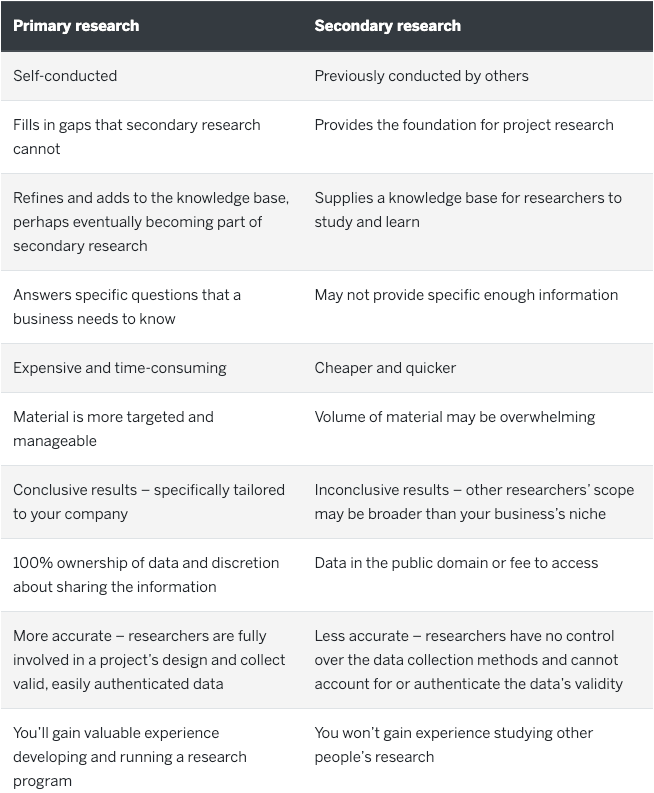
Primary research
Primary market research is when researchers collect information directly, instead of relying on outside sources of information. It could be done through interviews, online surveys, or focus groups and the advantage here is that the company owns that information. The disadvantage of using primary sources of information is that it's usually more expensive and time-consuming than secondary market research.
Secondary research
Secondary market research involves using existing data that is summarized and collected by third parties. Secondary sources could be commercial sources or public sources like libraries, other websites, blogs , government agencies, and existing surveys. It's data that's more readily available and it's usually much cheaper than conducting primary research.
Qualitative vs quantitative research
Qualitative research is about gathering qualitative data like the market sentiment about the products currently available on the market (read: words and meanings). Quantitative research deals with numbers and statistics. It's data that is numbers-based, countable, and measurable.
Types of market research
1. competitive analysis.
Every business needs to know its own strengths and weaknesses and how they compare with its largest competitors in the market. It helps brands identify gaps in the market, develop new products and services, uncover market trends, improve brand positioning , and increase their market share. A SWOT analysis is a good framework to use for this type of research.
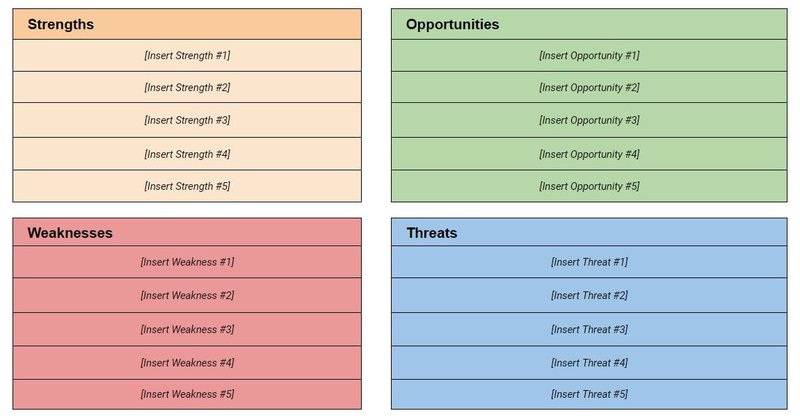
2. Consumer insights
It's also equally important to know what consumers are thinking, what the most common problems are and what products they are purchasing. Consumer research can be done through social listening which involves tracking consumer conversations on social media. It could also include analyzing audiences of brands , online communities, and influencers, and analyzing trends in the market.
3. Brand awareness research
Brand awareness is a super important metric for understanding how well your target audience knows your brand. It's used to assess brand performance and the marketing effectiveness of a brand. It tells you about the associations consumers make when they think of your brand and what they believe you're all about.
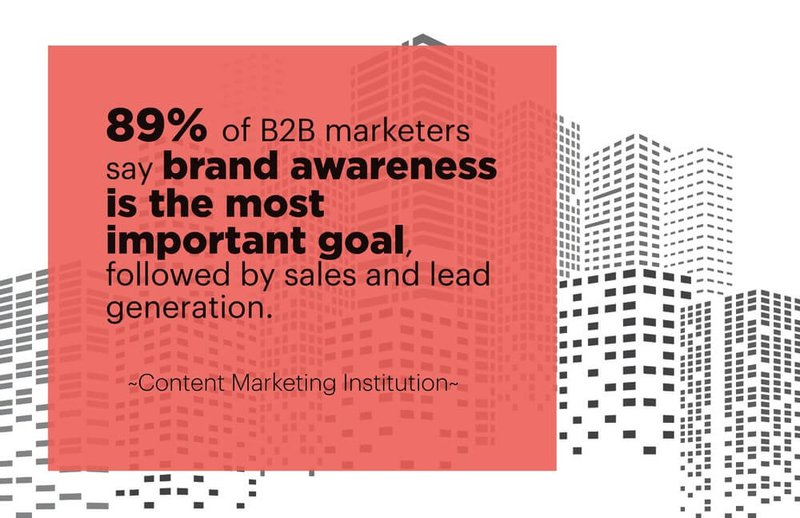
4. Customer satisfaction research
Customer satisfaction and loyalty are two really important levers for any business and you don't have to conduct in-depth interviews to get that information. There is a wide range of automated methods to get that kind of data including customer surveys such as NPS surveys, customer effort score (CES) surveys, and regularly asking your customers about their experience with your brand.
5. Customer segmentation research
Customer segmentation research involves figuring out what buckets consumers fall into based on common characteristics such as - demographics, interests, purchasing behavior, and more. Market segmentation is super helpful for advertising campaigns, product launches, and customer journey mapping.
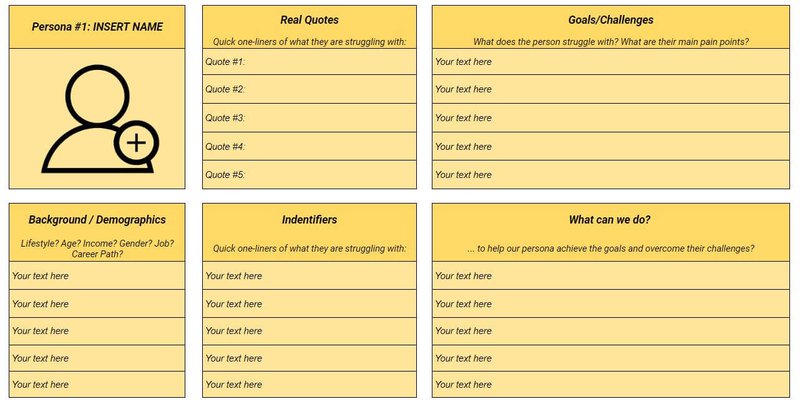
6. Interviews
Customer interviews are one of the most effective market research methods out there. It's a great way for business owners to get first-party data from their customers and get insights into how they are doing in real time.
7. Focus groups
Focus groups are a great way to get data on a specific demographic. It's one of the most well-known data collection methods and it involves taking a sample size of people and asking them some open-ended questions. It's a great way to get actionable insights from your target market.
8. Pricing research
Pricing strategy has a huge influence on business growth and it's critical for any business to know how they compare with the leading brands in their niche. It can help you understand what your target customer is willing to pay for your product and at what price you should be selling it.
To start, get automated software to track your competitors' pricing . Then, summarize your research into a report and group the results based on product attributes and other factors. You can use quadrants to make it easier to read visually.
9. Campaign research
It's also important for a brand to research its past marketing campaigns to determine the results and analyze their success. It takes a lot of experimentation to nail the various aspects of a campaign and it's crucial for business leaders to continuously analyze and iterate.
10. Product/service use research
Product or user research gives you an idea of why and how an audience uses a product and gives you data about specific features. Studies show that usability testing is ranked among the most useful ways to discover user insights (8.7 out of 10), above digital analytics and user surveys. So it's a very effective way to measure the usability of a product.
Now that you know the different types of market research let's go through a step-by-step process of setting up your study.
How to conduct a market research study
Looking for your next business idea? Want to check which niche markets are going to be best for it? if it's going to Here's a pretty simple process for conducting
1. Define your buyer persona
The first step in market research is to understand who your buyers are. For that, you need a buyer persona (sometimes called a marketing persona) which is a fictional generalized description of your target customer. You could (and should) have several buyer personas to work with.
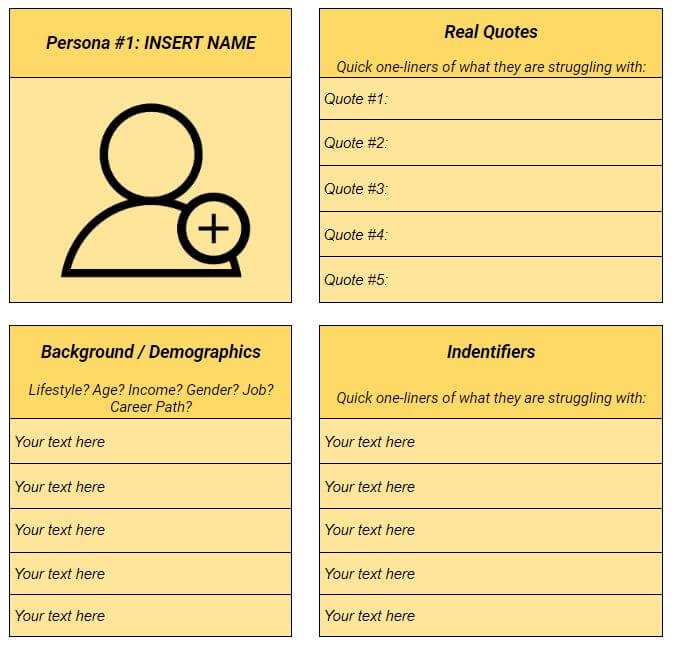
Key characteristics to include in your buyer personas are:
- Job title(s)
- Family size
- Major challenges
Now that you've got your customer personas it's time to decide who to work with for your research.
2. Identify the right people to engage with
It's critical that you pick the right group of people to research. This could make or break your market research study. It's important to pick a representative sample that most closely resembles your target customer. That way you'll be able to identify their actual characteristics, challenges, pain points, and buying behavior.
Here are a few strategies that will help you pick the right people:
- Select people who have recently interacted with you
- Pull a list of participants who made a recent purchase
- Call for participants on social media
- Leverage your own network
- Gather a mix of participants
- Offer an incentive (gift card, product access, content upgrades)
3. Pick your data collection method(s)
Here's a quick breakdown of all the different ways you could collect data for your market research study.
Surveys are by far the fastest method of gathering data. You could launch them on your site or send them in an email and automate the whole process. Regular surveys can also help brands improve their customer service so they help kill two birds with one stone.
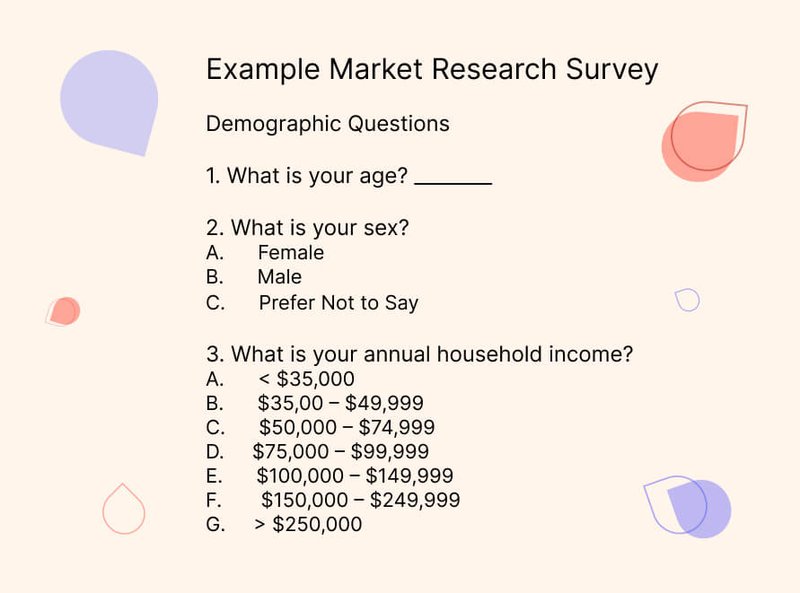
Interviews take a little longer and require a detailed set of interview questions. Never go into an interview without a clear idea of what you're going to be asking. It's also a little more difficult to schedule time and to get your potential or current customers on the phone or on Zoom.
Focus group
Focus groups are controlled interviews with groups of people led by facilitators. Participants in focus groups are selected based on a set of predetermined criteria such as location, age, social status, income, and more.
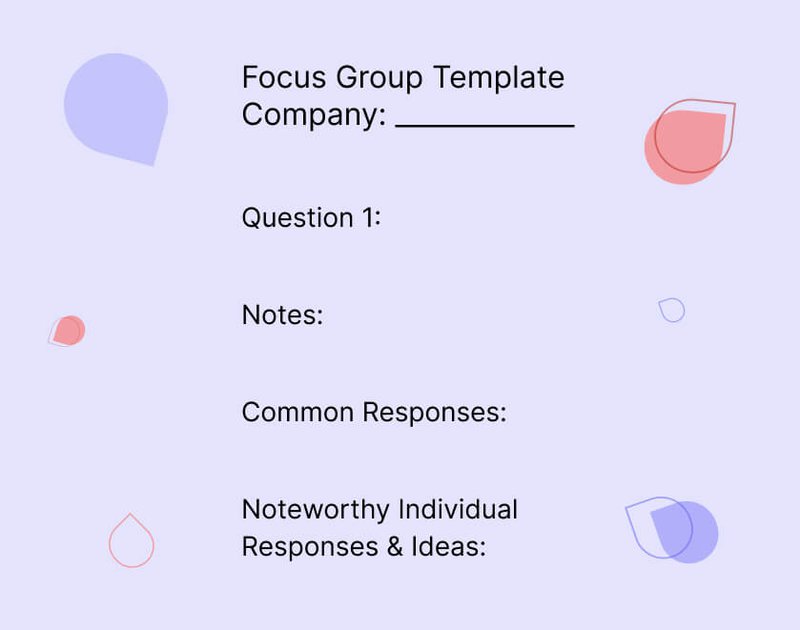
Online tracking
Online tracking is done through digital analytics tools like HotJar or Google Analytics. Tracking user behavior on your site gets you an accurate analysis of who your demographic is and what are the types of products or content that they engage with.
The problem here is that you never get to find out the 'why' - the reason behind their behavior - and that's why you need to combine digital analytics with other data collection methods like surveys and usability/product testing.
Marketing analysis
Another great way to collect data is to analyze your marketing campaigns which gives you a great idea of who clicked on your ads, how often, and which device they used. It's a more focused way of using tracking to zero in on a specific marketing campaign.
Social media monitoring
We've talked about this one before. Social monitoring or listening is when you track online conversations on social media platforms. You can use a simple social listening tool to get all the data you need by searching for specific keywords, hashtags, or topics.
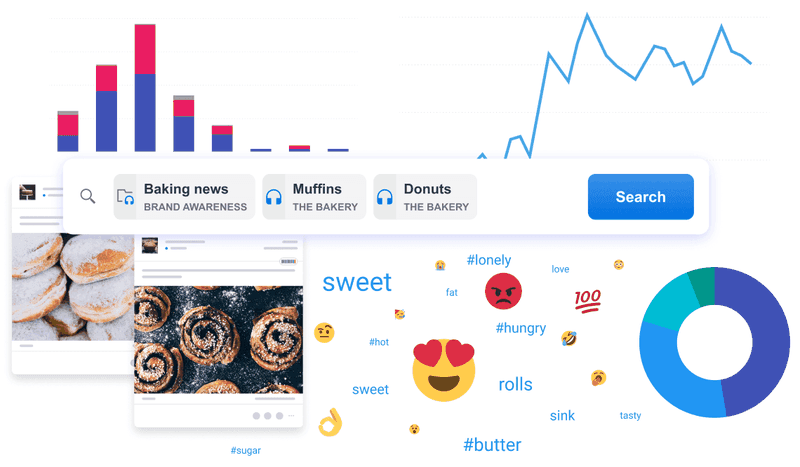
Subscription and registration data
Another great way to collect data is to look at your existing audience. That might include your email list, rewards program, or existing customers. Depending on the size of your list, it could give you some broad insights into the type of customers/users you have and what they are most interested in.
Monitoring in-store traffic
Conduct a customer observation session to monitor your actual customers and how they behave in your store (physically or online). Observation is a market research technique where highly-trained market researchers observe how people or consumers interact with products/services in a natural setting.

4. Prepare your research questions
Write down your research questions before you conduct the research. Make sure you cover all the topics that you are trying to gain clarity on and include open-ended questions. The type of questions you use will vary depending on your data collection approach from the last step.
If you're doing a survey or an in-person interview then here are some of the best questions to ask.
The awareness stage
- How did you know that something in this product category could help you?
- Think back to the time you first realized you needed [product category]. What was your challenge?
- How familiar were you with different options on the market?
The consideration stage
- Where did you go to find out the information?
- What was the first thing you did to research potential solutions?
- Did you search on Google? What specifically did you search for? Which keywords did you use?
- Which vendor sites did you visit?
- What did you find helpful? What turned you off?
The decision stage
- Which criteria did you use to compare different vendors?
- What vendors made it to the shortlist and what were the pros/cons of each?
- Who else was involved in the final decision?
- Allow time for further questions on their end.
- Don't forget to thank them for their time and confirm their email/address to receive the incentive you offered
If you noticed, the progression of these questions follows the stages of the buyer's journey which helps you to gain actionable insights into the entire customer experience.
5. List your primary competitors
There are two kinds of competitors - industry competitors and content competitors. Industry competitors compete with you on the actual product or service they sell. Content competitors compete with you in terms of the content they publish - whether that's on specific keywords or they rank higher on topics that you want to be ranked for.
It's important to write a list of all of your competitors and compare their strengths, weaknesses, competitive advantages, and the type of content they publish.
There are different ways to find your competitors. You can look on sites like G2 Crowd and check their industry quadrants.
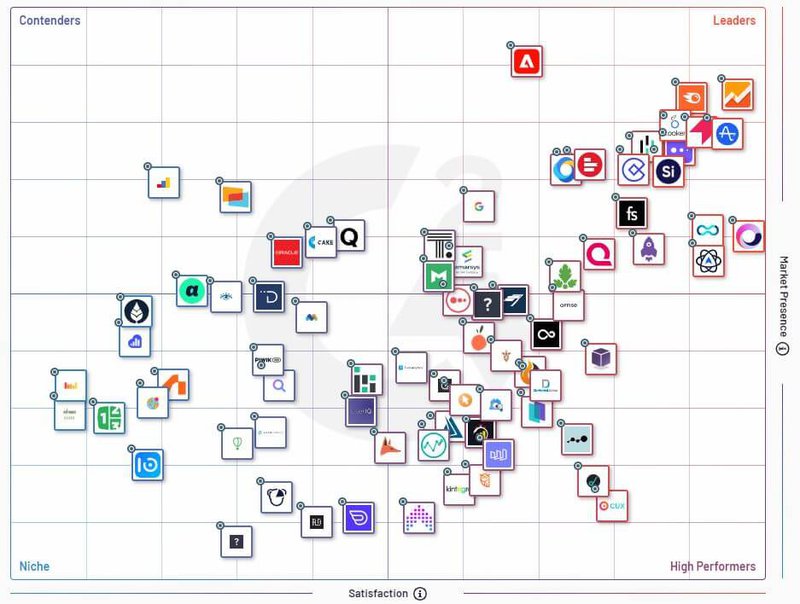
You could also download a market report from Forrester or Gartner . And you could also search on social media or market research tools like SimilarWeb .
6. Summarize your findings
Now that you've done your research it's time to summarize your findings. Look for common themes in your research and try to present them in the simplest way possible. Use your favorite presentation software to document it and add it to your company database.
Here's a quick research outline you could use:
Background - your goals and why you conducted this study
Participants - who you've talked to. Break down the type of personas and/or customers you've spoken with.
Executive summary - what was the most interesting stuff you've learned? What do you plan to do about it?
Customer journey map - map out the specific motivations and behavioral insights you've gained from each stage of the customer journey (awareness, consideration, and decision).
Action plan - describe what action steps you're going to take to address the issues you've uncovered in your research and how you are going to promote your product/service to your target audience more effectively.
Market research template
Not sure where to begin? Need some templates to help you get started? We got them for you.
1. Market survey template
First and foremost, you need a template to run your market survey. In this template, you will find all the types of questions you should be asking - demographic, product, pricing, and brand questions. They can be used for market surveys, individual interviews, and focus groups.
We also present a variety of question formats for you to use:
- true/false questions
- multiple choice questions
- open response questions
2. SWOT analysis template
A strength, weakness, opportunities, and threats (SWOT) analysis is one of the best ways to do competitor research. It's a really simple analysis. There are four squares and you write down all four of these attributes for each of your competitors.
3. Focus group template
Not sure how to conduct focus groups? Here is a comprehensive template that will help you to take better notes and record your findings during the focus group meeting.
4. Marketing strategy template
The plan of action from your market research should become a vital part of your marketing strategy. We've actually created a marketing strategy template that you could download and use to update your marketing personas, your SWOT analysis, and your marketing channel strategies.
Market research examples
Here are some examples of the good, the bad, and the ugly in market research. Some brands thrive on research and some ignore it completely. Take a look.
McDonald's
McDonald’s sells its food in 97 countries around the world. Their secret? They do a lot of market research before they launch anything. The company uses four key questions in their research process:
- Which products are performing well?
- What prices are most affordable to customers?
- What are consumers reading and watching?
- What content do they consume?
- Which restaurants are most attended, and why?
They also extensively use customer feedback to improve their products. They even put some products up for a vote to see which ones are most loved by their customers.

The iconic coffee brand is valued at almost $30 billion and has over 30,000 coffee shops around the world and part of that success comes from their obsession with customer service. They launched a brilliant idea called “My Starbucks Idea” to try and make the customer feel a part of the journey.
It was an open innovation platform where customers could post their idea for a new coffee drink or food item and if it was good a company representative would actually reach out to them. It had a leaderboard and every year the company would develop some of these ideas.
In 2012, Starbucks launched 73 coffee products from ideas they received from customers. Cake pops and pumpkin spice lattes were born out of this platform, all thanks to market research. Can you imagine a world without pumpkin spice lattes?
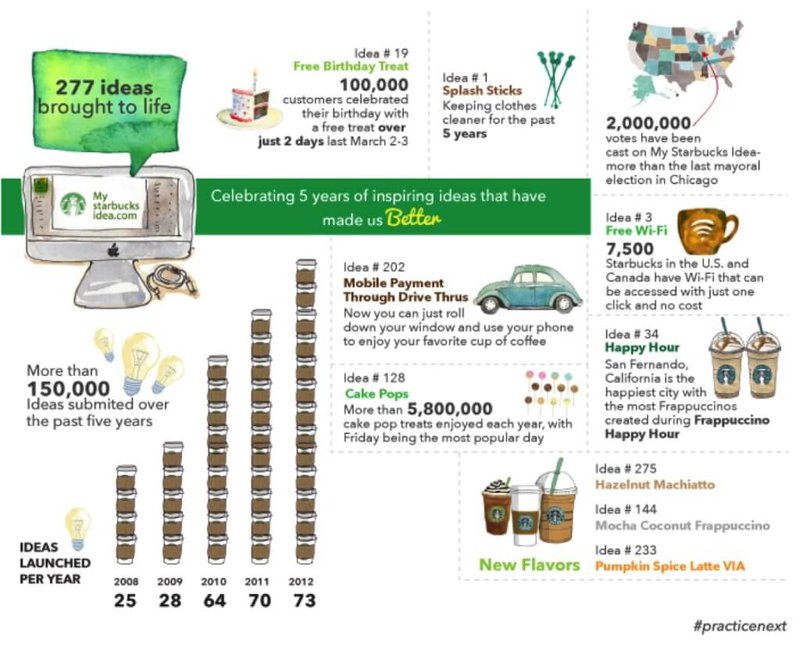
For all its innovation Facebook had an epic market research failure. In 2013, Facebook partnered with HTC to launch a smartphone called First. It had Facebook’s interface on its home screen and that was a really jarring change for most people. Instead of taking you to a home screen with your favorite apps, Facebook really took center stage.
To be fair, you could turn it off and get a regular Android home window but that would be missing the entire reason you bought the phone in the first place. So it was a complete mismatch to consumers’ wants and the phone flopped.
Turns out, that nobody wanted to see Facebook when they first opened their phone 😅.

Bloom & Wild
Bloom & Wild is a UK flower delivery brand that was looking for their next campaign. They did some research and found out that people think red roses are cliche and prefer to buy something else as a gift on Valentine’s Day. So the brand chose not to sell roses for Valentine’s Day 2021 and made it into a “No Roses Campaign”.
The results - they saw a 51% increase in press coverage year after year.

Top tools used for market research
Here are some of the top market research and digital analytics tools you should try out for your next research project.
Answer the Public
Answer the public is a free market research tool that helps marketers figure out what questions people ask online. It's really easy to use. You put in a keyword or topic and it spits out a whole variety of questions and subtopics.

Spyfu is a search engine analytics platform that gives you data on where your competitors get their traffic from. It provides info on the kind of both organic traffic and PPC channels down to the specific keywords people used to find each site. It's a great tool to use to map the competitive landscape.
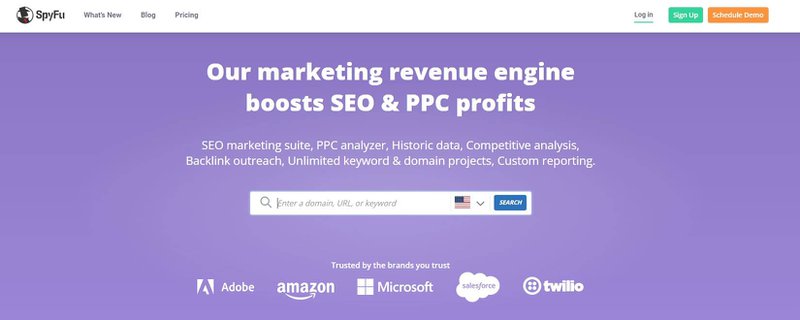
Think with Google
This is an online publication from Google's team where they publish consumer insights from real-time data and their own insights. It uses Google Analytics but presents it to you as a library of information. You can find industry data on a whole array of businesses from educational institutions to counseling services.
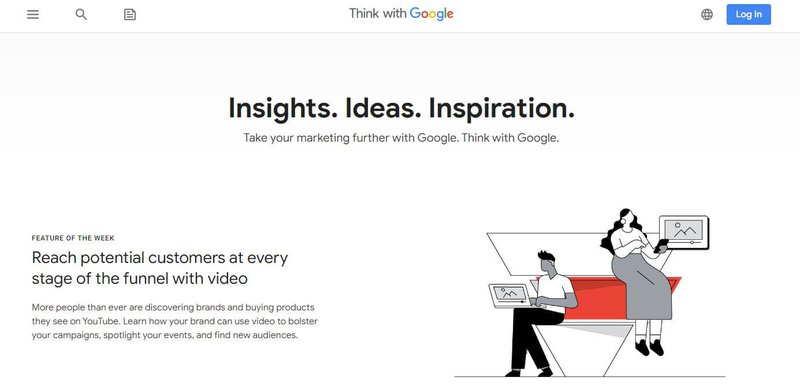
Want to do the most extensive market research possible? Use SimilarWeb. It's a competitive analysis and data tool that provides you with literally everything you need.
It has data on:
- Digital marketing data - SEO, traffic, advertising
- Economic trends - economic indicators like annual growth rate, audience, benchmarking
- eCommerce, investing, and even sales data

BuzzSumo is a great tool to use to get actionable insights from social media and content marketing. It aggregates data from various social media channels and shows you the type of content that users engage with and share on their pages.
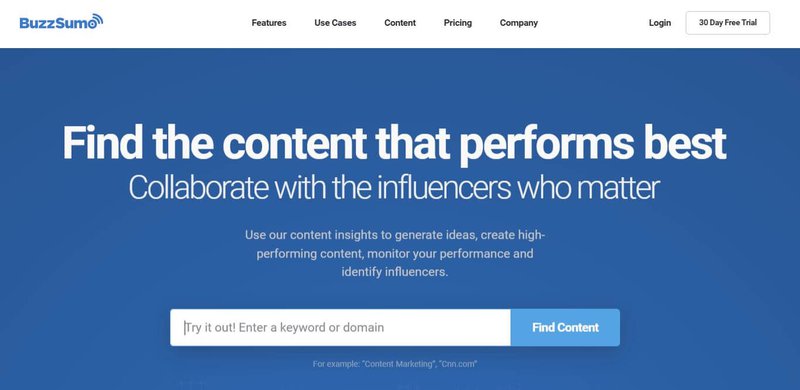
Typeform is a survey tool that can help you make surveys and fun interactive forms. It's a great tool to use to make your forms more engaging for your audience. The tool has a bunch of easy templates and a ton of integrations to help you visualize that data and share it with your team.
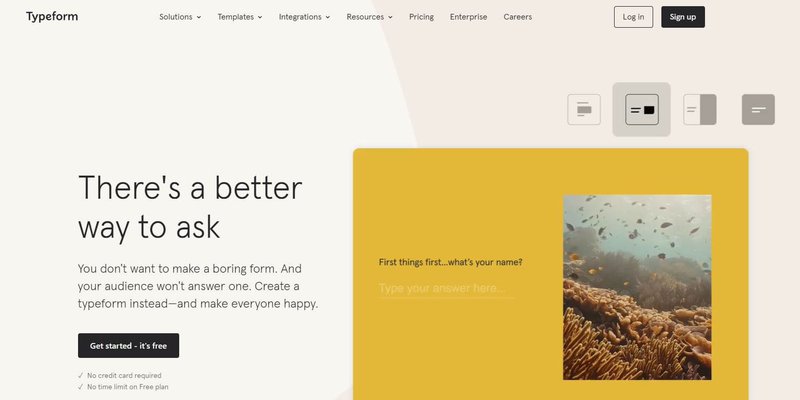
Latana is a brand research tool that helps you understand consumer perception of your brand over time. It helps you answer some key questions about the type of values your customers have, and the type of audiences your competitors are targeting and helps you to focus your campaigns on the right audience for your business.
Statista is one of the most popular consumer data platforms around. It has a wealth of information about consumer markets, business conditions, and industry trends around the world. It's easier to use than most business publications because it aggregates all the data you need in one place. The downside is that it's a little pricy but perfect for teams that have the budget for it.
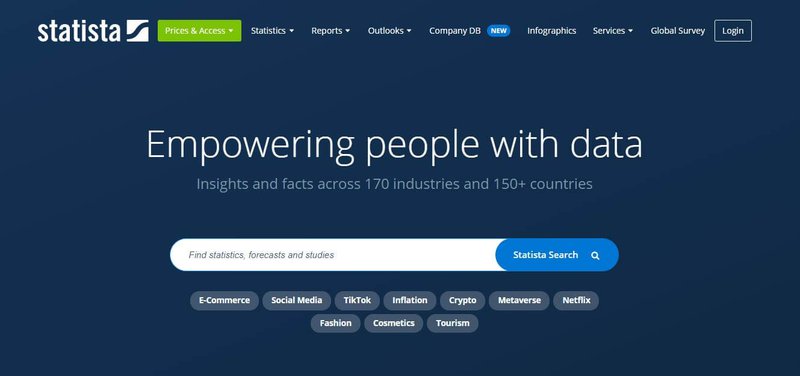
Dimensions.ai
Dimensions is a search engine for academic publications. It is a great resource if you're looking for deeper insights into things like psychology, micro and macroeconomics, and business trends. A lot of the articles are free to view just make sure you select the " All OA " option which stands for Open Access research.
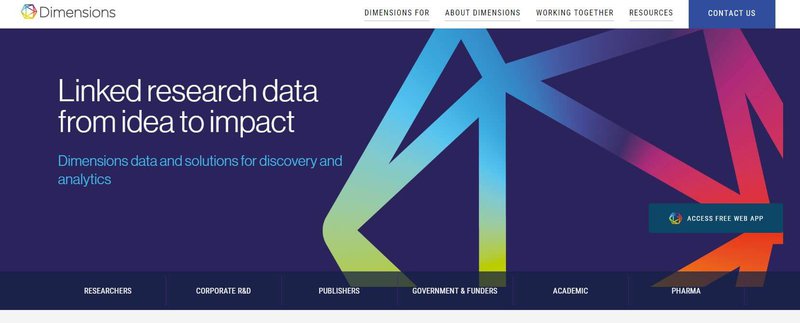
Otter is an AI-powered transcription software for interviews and meetings. It sits in the background and transcribes your meeting for you and then provides you with a digitized conversation that can be stored, search for specific keywords, and analyzed. It's a great tool to use for doing interviews.
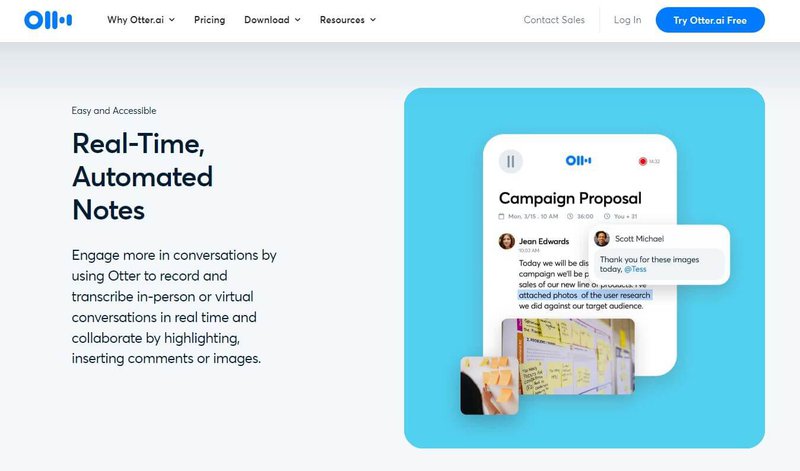
Yelp is a search engine for reviews of local businesses. It's one of the best sources of opinions about a whole variety of products and services. It's a great place to get ideas about the kind of interview questions you want to ask, to find out the pain points of your ideal customer, and to find deeper insights into your target audience.

You have to conduct your market research regularly if you want to see significant results. Try the different methods that we’ve outlined, see what works for you, and remember to keep your team’s focus on the customer. The more knowledgeable they are of your target customer’s needs and wants the better your targeting and marketing strategy will be.
Related Articles

Omer Farkash
Uncover the Hidden Truth Behind Hiring: Are Interview Pitches Enough?

Ella Goldfeld
Family Traveller: More Page Sessions for the Same Cost

Clutch Recognizes Mayple Among Israel’s Top B2B Companies for 2022
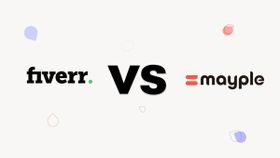
Fiverr vs. Mayple - The Ultimate Comparison
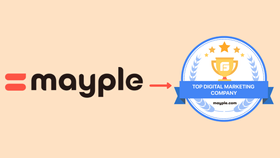
Rakefet Yacoby From
Mayple is Recognized by GoodFirms

How to Develop A Market Research Plan
- Market Research
Market research can often get de-prioritized. Yet, having an effective market research can be a game changer for your marketing strategy.
Take the time to craft a goal-oriented market research plan . This will ensure that your team focuses on high-value initiatives. These initiatives will either give you a leg up on the competition, strengthen your connection with your audience, or both.
But what does a effective, goal-oriented market research plan look like? We’ve compiled dozens (if not hundreds) here at Alchemer, and these are what we’ve found to be key drivers of success.
4 Common Market Research Areas
Most market research surveys are conducted to gain insight about the target audience and ways to expand market reach. Here are some common market research types:
Brand Awareness: Brand awareness studies measure consumers’ awareness of your product or service.
These surveys are usually anonymous. They ask consumers how familiar they are with a brand. They also inquire about which familiar brands consumers recall for a particular product or service. These studies often include questions about buying behavior (usage, convenience, attributes, price, etc.).
Brand awareness studies will help you determine your brand’s relative position in the marketplace. They will also reveal where your competitors may have an edge.
Target Audience: You can’t afford to target everyone. Knowing who your target audience is will help you craft relevant messages that resonate with them. By focusing on those who are most likely to purchase from you can prioritize your marketing spend and get the best possible ROI.
Customer Acquisition: To acquire new customers, you need to understand what makes them tick. Surveying your ideal customers can help you learn how and why they chose your brand. This knowledge allows you to acquire more customers like them.
Customer Retention: As marketers, we know that it is cheaper to retain current customers than acquire new ones. Conduct market research to measure customer satisfaction, increase customer loyalty, and drive up those retention numbers.
What Market Research Can Tell You
Knowing these common subjects of market research is a great place to start. However, you also need a strong understanding of what you hope to learn by the end of the process.
A well-designed market research survey can help you determine whether you need to:
- Enter a new market
- Launch a new product or service
- Promote brand awareness
- Optimize your marketing campaign
- Improve customer service
- Change messaging perception of your product or service
- Adjust price points
- Change your product packaging or delivery method
Once you’ve identified your objectives, it’s time to start creating the plan itself.
5 Success Tips for Market Research Surveys
These are our top five tips for giving your market research the best chance for success.
1. Define Your Marketing Challenge
The first step to designing a good market research plan is to define your need. What issue do you want to address? What do you hope to achieve? Set a survey goal to keep your market research focused on the decisions you are trying to make.
Conduct a qualitative study first to identify pressing issues or test a hypothesis before proceeding. Distribute this exploratory market survey to a focus group, or conduct a phone or personal interview.
Social media has become increasingly popular for gauging people’s interest. It is also a great way to engage your audience on a specific topic. You can post a short survey or a one question poll to quickly test your hypothesis before conducting a full study.
2. Craft Your Survey Questions Carefully
With your market research goal in mind, you are ready to design and build your survey questions.
Since you have already completed the exploratory phase, most of your questions should be quantitative. Quantifiable data will give you data you can act on. You can use a few qualitative questions but keep these to a minimum to avoid survey fatigue and abandonment.
Only ask questions that are relevant to your objectives. Asking the wrong questions will result in misleading answers that in turn will lead to poor business decisions.
Knowing how to ask a question is just as important as what to ask. Avoid leading questions and be aware of sensitive questions that some respondents may find too personal or offensive. Keep your questions simple, specific and direct.
3. Distribute Your Research Survey to the Right Audience
Before you start collecting data, consider the sample size needed for a statistically sound conclusion. Also, determine the distribution method to reach your target audience.
Market Sample Size
It is not realistic to think that you will be able to survey your entire target population, but you do need an adequate percentage and a representative cross-section of your consumer base.
Adjust the sample size for variations in your target population. You should also adjust it to find statistically significant differences between subgroups in the sample. You can read more about the intricacies of these types of analysis survey sample size here.
Survey Distribution Method
Choosing the right distribution method to collect your data is important. The distribution method determines which audience you can access. Additionally, different modes introduce different forms of bias.
Carefully consider your target audience and then find the best channel for reaching them.
For instance, if your target audience is an older demographic group, social media or internet channels might not be the best options. Consider alternative distribution methods that better reach this audience. Direct mail, phone, or personal interview may be the best option for reaching this audience.
If your audience is young and active, social media, email invitations, and mobile surveys might be effective options. A survey embedded on your website could also work well. Consider using other distribution methods to expand your survey’s reach. For example, include QR codes or web addresses on receipts, newsletters, and printed brochures.
4. Review Your New Market Research Data
Before you report and share your results, there are several steps you should take to review and prepare your data.
Clean your survey data:
Consider cleaning your survey data to locate any low-quality responses that could distort your conclusions.
Identify and weed out responses that have straight-line, Christmas tree, red herring, and/or outlier patterns.
Keep an eye on completion times as well. People who finish considerably faster than average may not be giving the questions their full attention.
Analyze your data:
Analyze the data to determine if your questions were answered in the format you expected. Unusual trends could indicate a problem with the question or question type.
If so, you may need to discount the question or run another study related to the learning objective.
Segment your data:
Filter your report by population segments. This will help you determine if the ratio accurately represents the demographics of your audience. If not, you may need to adjust the weight of your responses.
You can also segment your data by learning objective so that you can identify trends and patterns.
Report your results:
It’s time to highlight and share your findings! Consider data visualizations such as pie charts, bar graphs, and infographics that help to visually convey your message.
These visuals can drive home your data without requiring your audience to read each individual response.
5. Make Data-Driven Marketing Decisions
Armed with your market research data, you can confidently make sound marketing decisions. You can proceed with new campaigns confidently. You will have connected directly with your audience and can now create relevant messages.
Plan Your Next Online Market Research Survey
Budgeting and planning your market research can save you time, effort, and money in the long run. This approach ensures that you target the right audience, invest in the right sectors, and deliver the right branding message.
A well-designed marketing plan allows you to make tactical and strategic business decisions with confidence. So start planning your next market research survey!
Discussion: How often to you conduct a market research study? Share how your organization has benefited from them!
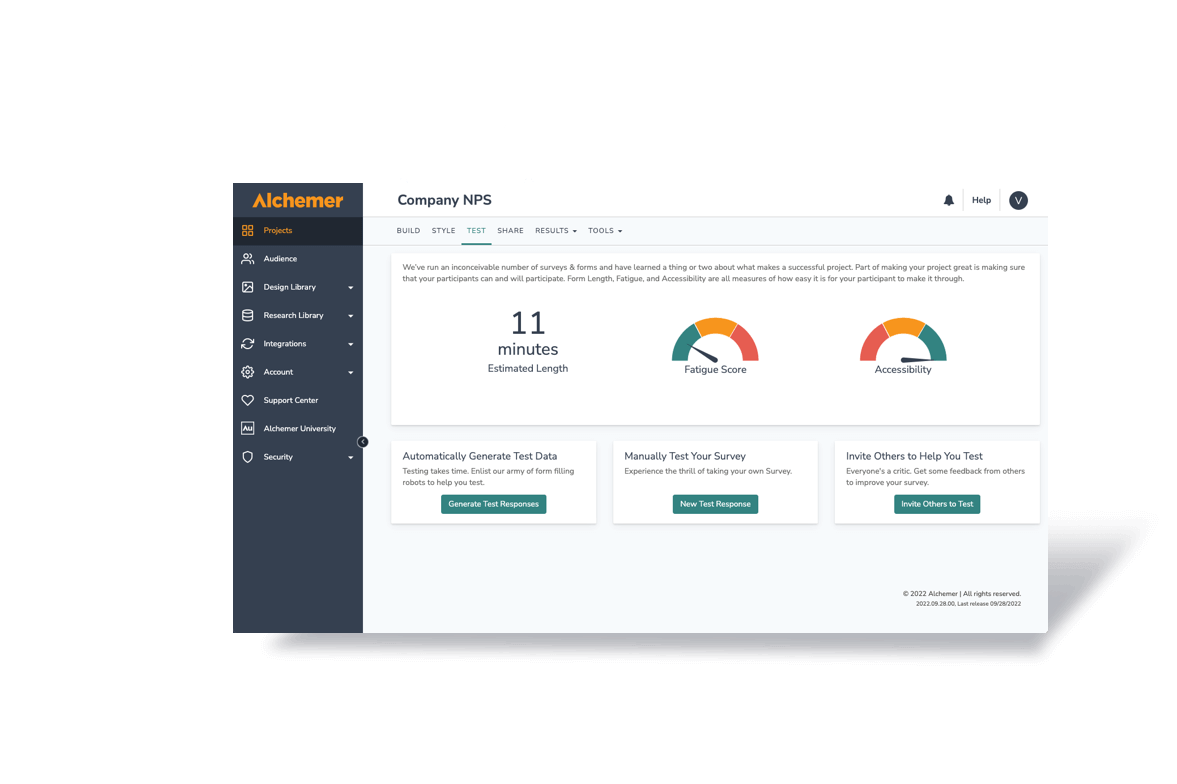
See all blog posts >

- Alchemer Survey , Customer Satisfaction (CSAT) , Net Promoter Score (NPS)

- Alchemer Survey , Customer Experience , Survey Tips

- Customer Feedback , Digital Transformation
See it in Action
How to Do Market Research: The Complete Guide
Learn how to do market research with this step-by-step guide, complete with templates, tools and real-world examples.
Access best-in-class company data
Get trusted first-party funding data, revenue data and firmographics
Market research is the systematic process of gathering, analyzing and interpreting information about a specific market or industry.
What are your customers’ needs? How does your product compare to the competition? What are the emerging trends and opportunities in your industry? If these questions keep you up at night, it’s time to conduct market research.
Market research plays a pivotal role in your ability to stay competitive and relevant, helping you anticipate shifts in consumer behavior and industry dynamics. It involves gathering these insights using a wide range of techniques, from surveys and interviews to data analysis and observational studies.
In this guide, we’ll explore why market research is crucial, the various types of market research, the methods used in data collection, and how to effectively conduct market research to drive informed decision-making and success.
What is market research?
The purpose of market research is to offer valuable insight into the preferences and behaviors of your target audience, and anticipate shifts in market trends and the competitive landscape. This information helps you make data-driven decisions, develop effective strategies for your business, and maximize your chances of long-term growth.

Why is market research important?
By understanding the significance of market research, you can make sure you’re asking the right questions and using the process to your advantage. Some of the benefits of market research include:
- Informed decision-making: Market research provides you with the data and insights you need to make smart decisions for your business. It helps you identify opportunities, assess risks and tailor your strategies to meet the demands of the market. Without market research, decisions are often based on assumptions or guesswork, leading to costly mistakes.
- Customer-centric approach: A cornerstone of market research involves developing a deep understanding of customer needs and preferences. This gives you valuable insights into your target audience, helping you develop products, services and marketing campaigns that resonate with your customers.
- Competitive advantage: By conducting market research, you’ll gain a competitive edge. You’ll be able to identify gaps in the market, analyze competitor strengths and weaknesses, and position your business strategically. This enables you to create unique value propositions, differentiate yourself from competitors, and seize opportunities that others may overlook.
- Risk mitigation: Market research helps you anticipate market shifts and potential challenges. By identifying threats early, you can proactively adjust their strategies to mitigate risks and respond effectively to changing circumstances. This proactive approach is particularly valuable in volatile industries.
- Resource optimization: Conducting market research allows organizations to allocate their time, money and resources more efficiently. It ensures that investments are made in areas with the highest potential return on investment, reducing wasted resources and improving overall business performance.
- Adaptation to market trends: Markets evolve rapidly, driven by technological advancements, cultural shifts and changing consumer attitudes. Market research ensures that you stay ahead of these trends and adapt your offerings accordingly so you can avoid becoming obsolete.
As you can see, market research empowers businesses to make data-driven decisions, cater to customer needs, outperform competitors, mitigate risks, optimize resources and stay agile in a dynamic marketplace. These benefits make it a huge industry; the global market research services market is expected to grow from $76.37 billion in 2021 to $108.57 billion in 2026 . Now, let’s dig into the different types of market research that can help you achieve these benefits.
Types of market research
- Qualitative research
- Quantitative research
- Exploratory research
- Descriptive research
- Causal research
- Cross-sectional research
- Longitudinal research
Despite its advantages, 23% of organizations don’t have a clear market research strategy. Part of developing a strategy involves choosing the right type of market research for your business goals. The most commonly used approaches include:
1. Qualitative research
Qualitative research focuses on understanding the underlying motivations, attitudes and perceptions of individuals or groups. It is typically conducted through techniques like in-depth interviews, focus groups and content analysis — methods we’ll discuss further in the sections below. Qualitative research provides rich, nuanced insights that can inform product development, marketing strategies and brand positioning.
2. Quantitative research
Quantitative research, in contrast to qualitative research, involves the collection and analysis of numerical data, often through surveys, experiments and structured questionnaires. This approach allows for statistical analysis and the measurement of trends, making it suitable for large-scale market studies and hypothesis testing. While it’s worthwhile using a mix of qualitative and quantitative research, most businesses prioritize the latter because it is scientific, measurable and easily replicated across different experiments.
3. Exploratory research
Whether you’re conducting qualitative or quantitative research or a mix of both, exploratory research is often the first step. Its primary goal is to help you understand a market or problem so you can gain insights and identify potential issues or opportunities. This type of market research is less structured and is typically conducted through open-ended interviews, focus groups or secondary data analysis. Exploratory research is valuable when entering new markets or exploring new product ideas.
4. Descriptive research
As its name implies, descriptive research seeks to describe a market, population or phenomenon in detail. It involves collecting and summarizing data to answer questions about audience demographics and behaviors, market size, and current trends. Surveys, observational studies and content analysis are common methods used in descriptive research.
5. Causal research
Causal research aims to establish cause-and-effect relationships between variables. It investigates whether changes in one variable result in changes in another. Experimental designs, A/B testing and regression analysis are common causal research methods. This sheds light on how specific marketing strategies or product changes impact consumer behavior.
6. Cross-sectional research
Cross-sectional market research involves collecting data from a sample of the population at a single point in time. It is used to analyze differences, relationships or trends among various groups within a population. Cross-sectional studies are helpful for market segmentation, identifying target audiences and assessing market trends at a specific moment.
7. Longitudinal research
Longitudinal research, in contrast to cross-sectional research, collects data from the same subjects over an extended period. This allows for the analysis of trends, changes and developments over time. Longitudinal studies are useful for tracking long-term developments in consumer preferences, brand loyalty and market dynamics.
Each type of market research has its strengths and weaknesses, and the method you choose depends on your specific research goals and the depth of understanding you’re aiming to achieve. In the following sections, we’ll delve into primary and secondary research approaches and specific research methods.
Primary vs. secondary market research
Market research of all types can be broadly categorized into two main approaches: primary research and secondary research. By understanding the differences between these approaches, you can better determine the most appropriate research method for your specific goals.
Primary market research
Primary research involves the collection of original data straight from the source. Typically, this involves communicating directly with your target audience — through surveys, interviews, focus groups and more — to gather information. Here are some key attributes of primary market research:
- Customized data: Primary research provides data that is tailored to your research needs. You design a custom research study and gather information specific to your goals.
- Up-to-date insights: Because primary research involves communicating with customers, the data you collect reflects the most current market conditions and consumer behaviors.
- Time-consuming and resource-intensive: Despite its advantages, primary research can be labor-intensive and costly, especially when dealing with large sample sizes or complex study designs. Whether you hire a market research consultant, agency or use an in-house team, primary research studies consume a large amount of resources and time.
Secondary market research
Secondary research, on the other hand, involves analyzing data that has already been compiled by third-party sources, such as online research tools, databases, news sites, industry reports and academic studies.

Here are the main characteristics of secondary market research:
- Cost-effective: Secondary research is generally more cost-effective than primary research since it doesn’t require building a research plan from scratch. You and your team can look at databases, websites and publications on an ongoing basis, without needing to design a custom experiment or hire a consultant.
- Leverages multiple sources: Data tools and software extract data from multiple places across the web, and then consolidate that information within a single platform. This means you’ll get a greater amount of data and a wider scope from secondary research.
- Quick to access: You can access a wide range of information rapidly — often in seconds — if you’re using online research tools and databases. Because of this, you can act on insights sooner, rather than taking the time to develop an experiment.
So, when should you use primary vs. secondary research? In practice, many market research projects incorporate both primary and secondary research to take advantage of the strengths of each approach.
One rule of thumb is to focus on secondary research to obtain background information, market trends or industry benchmarks. It is especially valuable for conducting preliminary research, competitor analysis, or when time and budget constraints are tight. Then, if you still have knowledge gaps or need to answer specific questions unique to your business model, use primary research to create a custom experiment.
Market research methods
- Surveys and questionnaires
- Focus groups
- Observational research
- Online research tools
- Experiments
- Content analysis
- Ethnographic research
How do primary and secondary research approaches translate into specific research methods? Let’s take a look at the different ways you can gather data:
1. Surveys and questionnaires
Surveys and questionnaires are popular methods for collecting structured data from a large number of respondents. They involve a set of predetermined questions that participants answer. Surveys can be conducted through various channels, including online tools, telephone interviews and in-person or online questionnaires. They are useful for gathering quantitative data and assessing customer demographics, opinions, preferences and needs. On average, customer surveys have a 33% response rate , so keep that in mind as you consider your sample size.
2. Interviews
Interviews are in-depth conversations with individuals or groups to gather qualitative insights. They can be structured (with predefined questions) or unstructured (with open-ended discussions). Interviews are valuable for exploring complex topics, uncovering motivations and obtaining detailed feedback.
3. Focus groups
The most common primary research methods are in-depth webcam interviews and focus groups. Focus groups are a small gathering of participants who discuss a specific topic or product under the guidance of a moderator. These discussions are valuable for primary market research because they reveal insights into consumer attitudes, perceptions and emotions. Focus groups are especially useful for idea generation, concept testing and understanding group dynamics within your target audience.
4. Observational research
Observational research involves observing and recording participant behavior in a natural setting. This method is particularly valuable when studying consumer behavior in physical spaces, such as retail stores or public places. In some types of observational research, participants are aware you’re watching them; in other cases, you discreetly watch consumers without their knowledge, as they use your product. Either way, observational research provides firsthand insights into how people interact with products or environments.
5. Online research tools
You and your team can do your own secondary market research using online tools. These tools include data prospecting platforms and databases, as well as online surveys, social media listening, web analytics and sentiment analysis platforms. They help you gather data from online sources, monitor industry trends, track competitors, understand consumer preferences and keep tabs on online behavior. We’ll talk more about choosing the right market research tools in the sections that follow.
6. Experiments
Market research experiments are controlled tests of variables to determine causal relationships. While experiments are often associated with scientific research, they are also used in market research to assess the impact of specific marketing strategies, product features, or pricing and packaging changes.
7. Content analysis
Content analysis involves the systematic examination of textual, visual or audio content to identify patterns, themes and trends. It’s commonly applied to customer reviews, social media posts and other forms of online content to analyze consumer opinions and sentiments.
8. Ethnographic research
Ethnographic research immerses researchers into the daily lives of consumers to understand their behavior and culture. This method is particularly valuable when studying niche markets or exploring the cultural context of consumer choices.
How to do market research
- Set clear objectives
- Identify your target audience
- Choose your research methods
- Use the right market research tools
- Collect data
- Analyze data
- Interpret your findings
- Identify opportunities and challenges
- Make informed business decisions
- Monitor and adapt
Now that you have gained insights into the various market research methods at your disposal, let’s delve into the practical aspects of how to conduct market research effectively. Here’s a quick step-by-step overview, from defining objectives to monitoring market shifts.
1. Set clear objectives
When you set clear and specific goals, you’re essentially creating a compass to guide your research questions and methodology. Start by precisely defining what you want to achieve. Are you launching a new product and want to understand its viability in the market? Are you evaluating customer satisfaction with a product redesign?
Start by creating SMART goals — objectives that are specific, measurable, achievable, relevant and time-bound. Not only will this clarify your research focus from the outset, but it will also help you track progress and benchmark your success throughout the process.
You should also consult with key stakeholders and team members to ensure alignment on your research objectives before diving into data collecting. This will help you gain diverse perspectives and insights that will shape your research approach.
2. Identify your target audience
Next, you’ll need to pinpoint your target audience to determine who should be included in your research. Begin by creating detailed buyer personas or stakeholder profiles. Consider demographic factors like age, gender, income and location, but also delve into psychographics, such as interests, values and pain points.
The more specific your target audience, the more accurate and actionable your research will be. Additionally, segment your audience if your research objectives involve studying different groups, such as current customers and potential leads.
If you already have existing customers, you can also hold conversations with them to better understand your target market. From there, you can refine your buyer personas and tailor your research methods accordingly.
3. Choose your research methods
Selecting the right research methods is crucial for gathering high-quality data. Start by considering the nature of your research objectives. If you’re exploring consumer preferences, surveys and interviews can provide valuable insights. For in-depth understanding, focus groups or observational research might be suitable. Consider using a mix of quantitative and qualitative methods to gain a well-rounded perspective.
You’ll also need to consider your budget. Think about what you can realistically achieve using the time and resources available to you. If you have a fairly generous budget, you may want to try a mix of primary and secondary research approaches. If you’re doing market research for a startup , on the other hand, chances are your budget is somewhat limited. If that’s the case, try addressing your goals with secondary research tools before investing time and effort in a primary research study.
4. Use the right market research tools
Whether you’re conducting primary or secondary research, you’ll need to choose the right tools. These can help you do anything from sending surveys to customers to monitoring trends and analyzing data. Here are some examples of popular market research tools:
- Market research software: Crunchbase is a platform that provides best-in-class company data, making it valuable for market research on growing companies and industries. You can use Crunchbase to access trusted, first-party funding data, revenue data, news and firmographics, enabling you to monitor industry trends and understand customer needs.
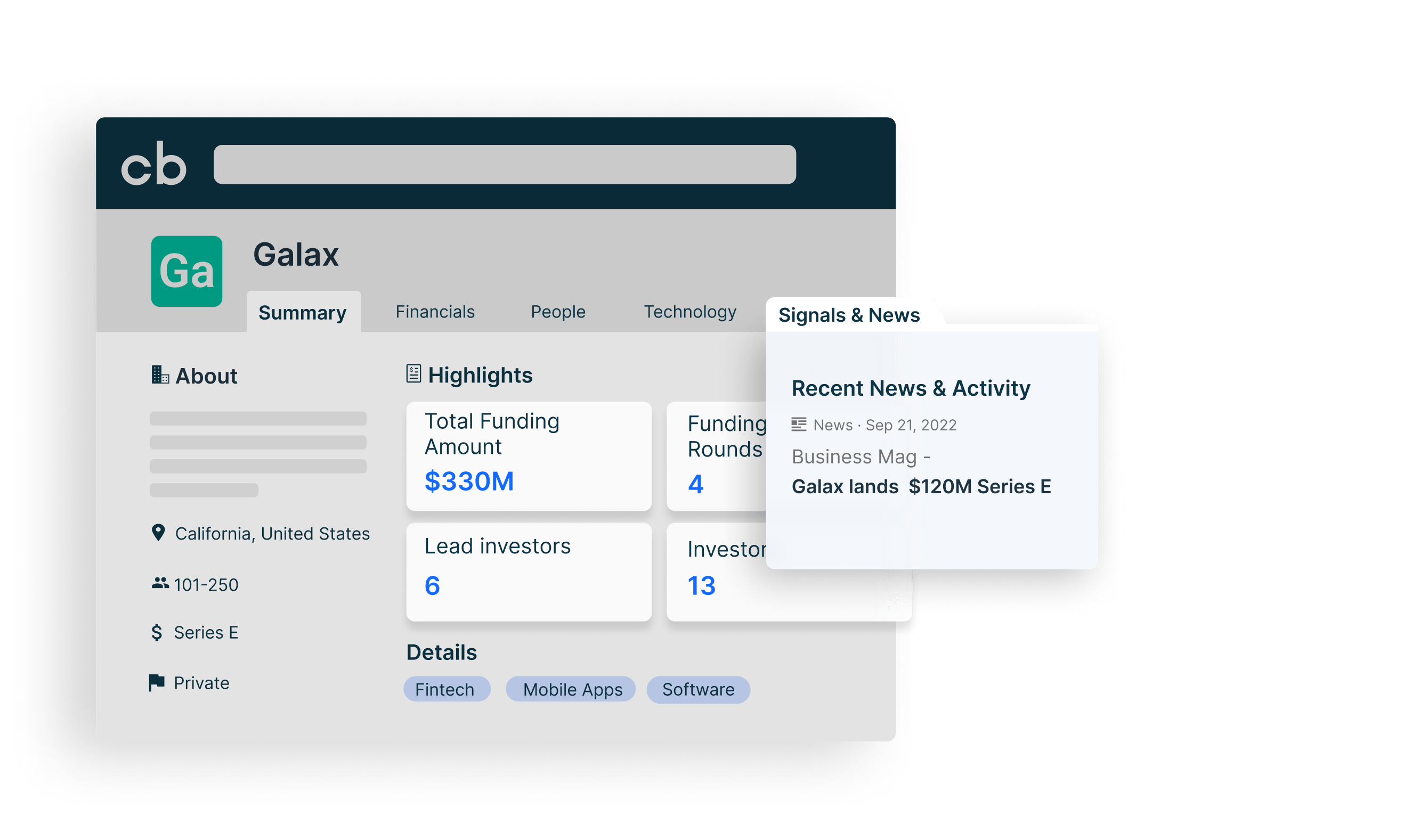
- Survey and questionnaire tools: SurveyMonkey is a widely used online survey platform that allows you to create, distribute and analyze surveys. Google Forms is a free tool that lets you create surveys and collect responses through Google Drive.
- Data analysis software: Microsoft Excel and Google Sheets are useful for conducting statistical analyses. SPSS is a powerful statistical analysis software used for data processing, analysis and reporting.
- Social listening tools: Brandwatch is a social listening and analytics platform that helps you monitor social media conversations, track sentiment and analyze trends. Mention is a media monitoring tool that allows you to track mentions of your brand, competitors and keywords across various online sources.
- Data visualization platforms: Tableau is a data visualization tool that helps you create interactive and shareable dashboards and reports. Power BI by Microsoft is a business analytics tool for creating interactive visualizations and reports.
5. Collect data
There’s an infinite amount of data you could be collecting using these tools, so you’ll need to be intentional about going after the data that aligns with your research goals. Implement your chosen research methods, whether it’s distributing surveys, conducting interviews or pulling from secondary research platforms. Pay close attention to data quality and accuracy, and stick to a standardized process to streamline data capture and reduce errors.
6. Analyze data
Once data is collected, you’ll need to analyze it systematically. Use statistical software or analysis tools to identify patterns, trends and correlations. For qualitative data, employ thematic analysis to extract common themes and insights. Visualize your findings with charts, graphs and tables to make complex data more understandable.
If you’re not proficient in data analysis, consider outsourcing or collaborating with a data analyst who can assist in processing and interpreting your data accurately.
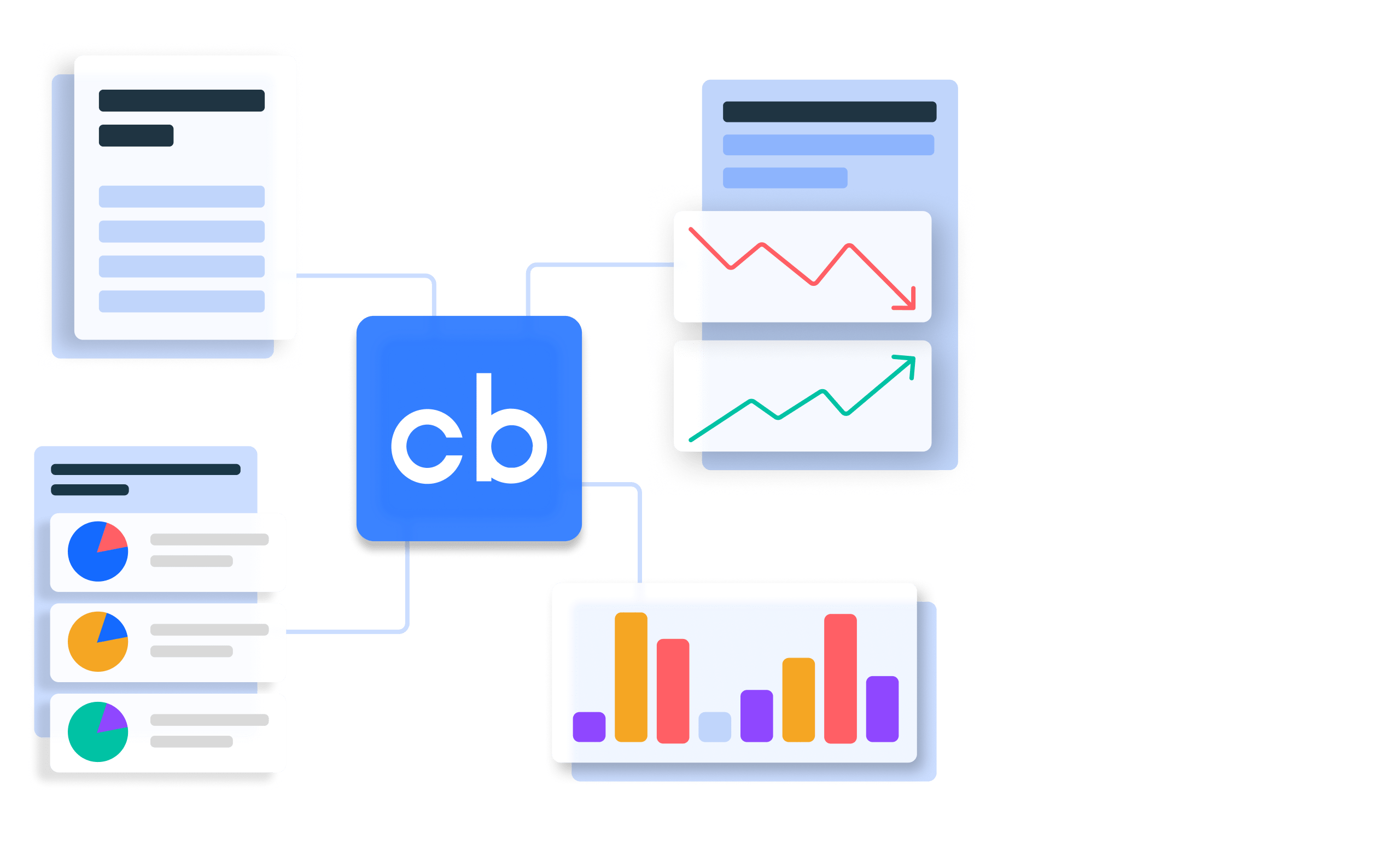
7. Interpret your findings
Interpreting your market research findings involves understanding what the data means in the context of your objectives. Are there significant trends that uncover the answers to your initial research questions? Consider the implications of your findings on your business strategy. It’s essential to move beyond raw data and extract actionable insights that inform decision-making.
Hold a cross-functional meeting or workshop with relevant team members to collectively interpret the findings. Different perspectives can lead to more comprehensive insights and innovative solutions.
8. Identify opportunities and challenges
Use your research findings to identify potential growth opportunities and challenges within your market. What segments of your audience are underserved or overlooked? Are there emerging trends you can capitalize on? Conversely, what obstacles or competitors could hinder your progress?
Lay out this information in a clear and organized way by conducting a SWOT analysis, which stands for strengths, weaknesses, opportunities and threats. Jot down notes for each of these areas to provide a structured overview of gaps and hurdles in the market.
9. Make informed business decisions
Market research is only valuable if it leads to informed decisions for your company. Based on your insights, devise actionable strategies and initiatives that align with your research objectives. Whether it’s refining your product, targeting new customer segments or adjusting pricing, ensure your decisions are rooted in the data.
At this point, it’s also crucial to keep your team aligned and accountable. Create an action plan that outlines specific steps, responsibilities and timelines for implementing the recommendations derived from your research.
10. Monitor and adapt
Market research isn’t a one-time activity; it’s an ongoing process. Continuously monitor market conditions, customer behaviors and industry trends. Set up mechanisms to collect real-time data and feedback. As you gather new information, be prepared to adapt your strategies and tactics accordingly. Regularly revisiting your research ensures your business remains agile and reflects changing market dynamics and consumer preferences.
Online market research sources
As you go through the steps above, you’ll want to turn to trusted, reputable sources to gather your data. Here’s a list to get you started:
- Crunchbase: As mentioned above, Crunchbase is an online platform with an extensive dataset, allowing you to access in-depth insights on market trends, consumer behavior and competitive analysis. You can also customize your search options to tailor your research to specific industries, geographic regions or customer personas.

- Academic databases: Academic databases, such as ProQuest and JSTOR , are treasure troves of scholarly research papers, studies and academic journals. They offer in-depth analyses of various subjects, including market trends, consumer preferences and industry-specific insights. Researchers can access a wealth of peer-reviewed publications to gain a deeper understanding of their research topics.
- Government and NGO databases: Government agencies, nongovernmental organizations and other institutions frequently maintain databases containing valuable economic, demographic and industry-related data. These sources offer credible statistics and reports on a wide range of topics, making them essential for market researchers. Examples include the U.S. Census Bureau , the Bureau of Labor Statistics and the Pew Research Center .
- Industry reports: Industry reports and market studies are comprehensive documents prepared by research firms, industry associations and consulting companies. They provide in-depth insights into specific markets, including market size, trends, competitive analysis and consumer behavior. You can find this information by looking at relevant industry association databases; examples include the American Marketing Association and the National Retail Federation .
- Social media and online communities: Social media platforms like LinkedIn or Twitter (X) , forums such as Reddit and Quora , and review platforms such as G2 can provide real-time insights into consumer sentiment, opinions and trends.
Market research examples
At this point, you have market research tools and data sources — but how do you act on the data you gather? Let’s go over some real-world examples that illustrate the practical application of market research across various industries. These examples showcase how market research can lead to smart decision-making and successful business decisions.
Example 1: Apple’s iPhone launch
Apple ’s iconic iPhone launch in 2007 serves as a prime example of market research driving product innovation in tech. Before the iPhone’s release, Apple conducted extensive market research to understand consumer preferences, pain points and unmet needs in the mobile phone industry. This research led to the development of a touchscreen smartphone with a user-friendly interface, addressing consumer demands for a more intuitive and versatile device. The result was a revolutionary product that disrupted the market and redefined the smartphone industry.
Example 2: McDonald’s global expansion
McDonald’s successful global expansion strategy demonstrates the importance of market research when expanding into new territories. Before entering a new market, McDonald’s conducts thorough research to understand local tastes, preferences and cultural nuances. This research informs menu customization, marketing strategies and store design. For instance, in India, McDonald’s offers a menu tailored to local preferences, including vegetarian options. This market-specific approach has enabled McDonald’s to adapt and thrive in diverse global markets.
Example 3: Organic and sustainable farming
The shift toward organic and sustainable farming practices in the food industry is driven by market research that indicates increased consumer demand for healthier and environmentally friendly food options. As a result, food producers and retailers invest in sustainable sourcing and organic product lines — such as with these sustainable seafood startups — to align with this shift in consumer values.
The bottom line? Market research has multiple use cases and is a critical practice for any industry. Whether it’s launching groundbreaking products, entering new markets or responding to changing consumer preferences, you can use market research to shape successful strategies and outcomes.
Market research templates
You finally have a strong understanding of how to do market research and apply it in the real world. Before we wrap up, here are some market research templates that you can use as a starting point for your projects:
- Smartsheet competitive analysis templates : These spreadsheets can serve as a framework for gathering information about the competitive landscape and obtaining valuable lessons to apply to your business strategy.
- SurveyMonkey product survey template : Customize the questions on this survey based on what you want to learn from your target customers.
- HubSpot templates : HubSpot offers a wide range of free templates you can use for market research, business planning and more.
- SCORE templates : SCORE is a nonprofit organization that provides templates for business plans, market analysis and financial projections.
- SBA.gov : The U.S. Small Business Administration offers templates for every aspect of your business, including market research, and is particularly valuable for new startups.
Strengthen your business with market research
When conducted effectively, market research is like a guiding star. Equipped with the right tools and techniques, you can uncover valuable insights, stay competitive, foster innovation and navigate the complexities of your industry.
Throughout this guide, we’ve discussed the definition of market research, different research methods, and how to conduct it effectively. We’ve also explored various types of market research and shared practical insights and templates for getting started.
Now, it’s time to start the research process. Trust in data, listen to the market and make informed decisions that guide your company toward lasting success.
Related Articles

- Entrepreneurs
- 15 min read
What Is Competitive Analysis and How to Do It Effectively
Rebecca Strehlow, Copywriter at Crunchbase

17 Best Sales Intelligence Tools for 2024
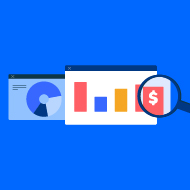
- Market research
- 10 min read
How to Do Market Research for a Startup: Tips for Success
Jaclyn Robinson, Senior Manager of Content Marketing at Crunchbase
Search less. Close more.
Grow your revenue with Crunchbase, the all-in-one prospecting solution. Start your free trial.
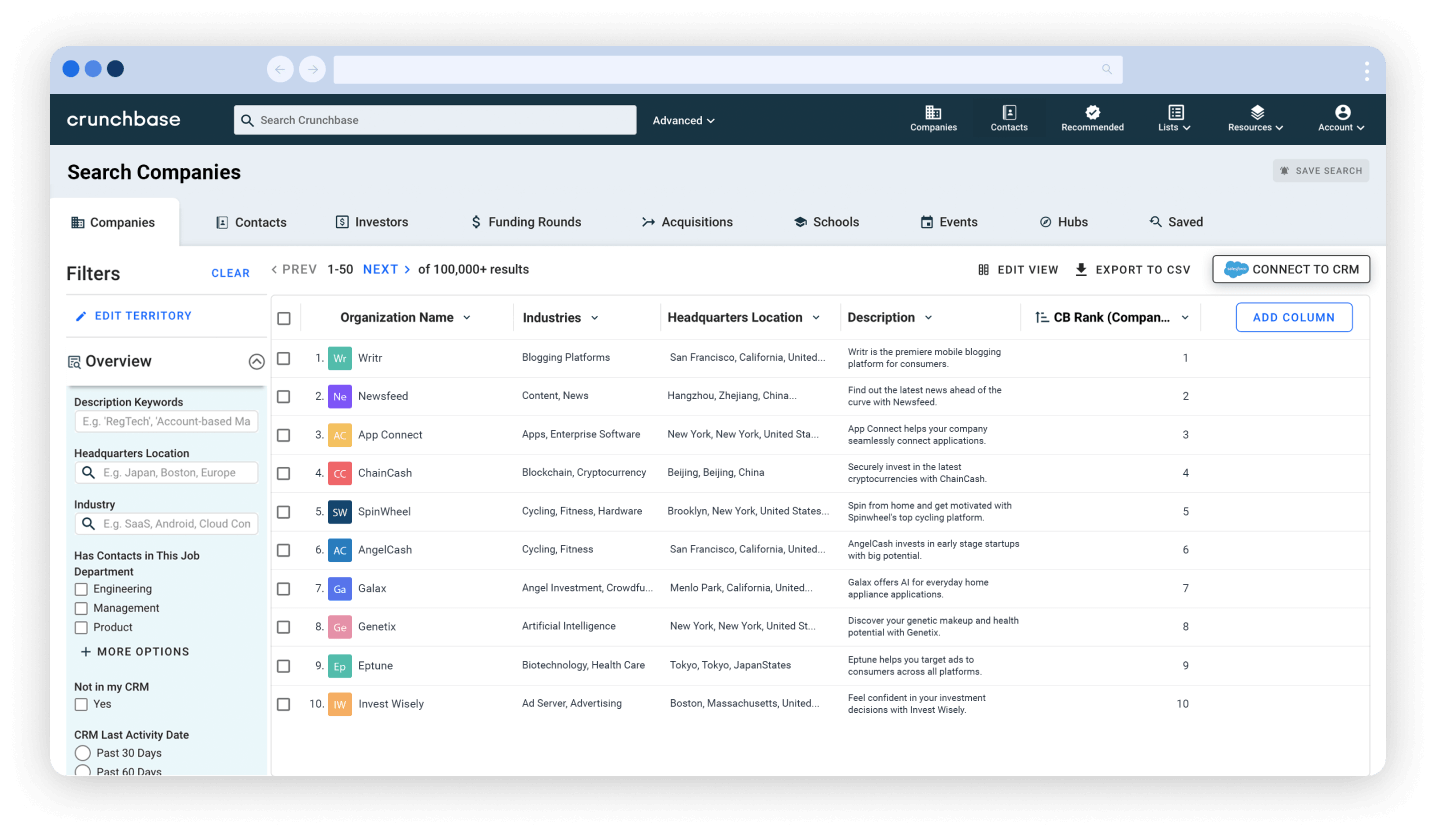
- Work & Awards Work & Awards Work & Awards Case Studies Portfolio Client Testimonials Awards Recent Case Studies Nutrition | Vitauthority How Email Marketing Increased AOV by 25%. Read the Case Study Technology | Ashling Partners How We Used a Digital Overlay at an In-Person Event to Increase MQLs. Read the Case Study
- Resources Resources Topic Marketing Strategy ABM Web Design Sales & Marketing Alignment Reporting & Attribution Function Creative Paid Media Demand Generation Public Relations Content Type Articles E-Books Templates Webinars Podcasts Bootcamps Assessments View All Resources Industries Healthcare Senior Living Manufacturing SaaS Finance Franchise Education Recent Resources Infographic Are You Ready for a Zendesk to HubSpot Service Hub Migration? Learn More Evaluation Evaluation for Sales Leaders: HubSpot Sales Hub vs. Salesforce Take the 5-Minute Evaluation

The 5-Step Marketing Research Process

March 14, 2023
By Sandy Moore
With constant change being the norm in marketing and business, one thing remains the same: the need for marketing research. Marketing research is a helpful tool for organizations to better identify marketing strategies and evaluate business decisions using data. Just as you wouldn’t go on vacation without making any plans, you shouldn’t design marketing strategies without backing them with research and data. In short, the marketing research process is the backbone of informed business and marketing decisions.
You might be surprised to hear that marketing research is one of the first things that organizations cut from their marketing budgets because of the high time (and sometimes monetary) investment. This is not the best decision, especially when your company is planning to launch a new product or venturing into a new market. As some savvy startups have learned, marketing research doesn't have to be expensive if you do it right and follow the right process.
Let’s review best practices when going through the five-step marketing research process:
1. Define the Problem or Opportunity
The most important part of the marketing research process is defining the problem. In order to do any research and collect data, you have to know what you are trying to learn from the research. In marketing research, defining the problem you need to solve will determine what information you need and how you can get that information. This will help your organization clarify the overarching problem or opportunity, such as how to best address the loss of market share or how to launch a new product to a specific demographic.
Develop questions that will allow you to define your problem (or opportunity), and examine all potential causes so that the research can be whittled down to the information you actually need to solve that problem or determine what action to take regarding an opportunity. Oftentimes, these are questions about who your target market or ideal buyer persona is (for example: “What does our ideal customer look like?”). These might include questions about demographics, what their occupation is, what they like to do in their spare time—anything to help you get a clearer picture of who your ideal buyer persona is. Consider as many variables and potential causes as possible.

2. Develop Your Marketing Research Plan
After you’ve examined all potential causes of the problem and have used those questions to boil down exactly what you’re trying to solve, it’s time to build the research plan. Your research plan can be overwhelming to create because it can include any method that will help you answer the research problem or explore an opportunity identified in step one.
To help you develop the research plan, let’s review a few techniques for conducting research:
- I nterview prospects and customers . Oftentimes, you get the best feedback by using this tactic because you’re going straight to the source. This might take the form of a focus group or one-on-one interviews. Use your defined research problem to help select the right people to interview.
- Conduct a survey using SurveyMonkey or another tool.
- Run user tests on your website or landing page(s). This is a cost-effective approach that can provide a lot of insight and data on how your customers or potential customers behave or respond to something, whether it’s new messaging or branding or a modified product or service you are thinking about offering. Simple A/B tests can go a long way in discovering user behavior. Use heatmapping tools, such as Hotjar or Lucky Orange, and website analytics tools , such as Google Analytics or HubSpot analytics , to track results depending on what data you need to collect.
Oftentimes, we do all of this work and gather all of the data—only to realize that we didn’t have to reinvent the wheel because someone had already run a similar, credible study or solved the same problem. That doesn’t mean you don’t need to do any research, but learning about what other organizations have done to solve a problem or seize an opportunity can help you tweak your research study and save you time when considering all of the research options. In marketing research, this is called secondary data because it has been collected by someone else, versus the primary data that you would collect through your own research study.
3. Collect Relevant Data and Information
In marketing research, most of the data you collect will be quantitative (numbers or data) versus qualitative, which is descriptive and observational. Ideally, you will gather a mix of the two types of data. For example, you might run an A/B test on your website to see if a new pricing tier would bring in more business. In that research study, you might also interview several customers about whether or not the new pricing tier would appeal to them. This way, you’re receiving hard data and qualitative data that provide more color and insight.
When collecting data, make sure it's valid and unbiased. You should never ask a research interviewee, “You think that we should offer a higher pricing tier with additional services, correct?” This type of question is clearly designed to influence the way the person responds. Try asking both open-ended and closed-ended questions (for instance, a multiple-choice question asking what income range best describes you).
4. Analyze Data and Report Findings
Now that you’ve gathered all of the information you need, it’s time for the fun part: analyzing the data. Although one piece of information or data might jump out at you, it’s important to look for trends as opposed to specific pieces of information. As you're analyzing your data, don't try to find patterns based on your assumptions prior to collecting the data.
Sometimes, it’s important to write up a summary of the study, including the process that you followed, the results, conclusions, and what steps you recommend taking based on those results. Even if you don’t need a formal marketing research report, be sure that you review the study and results so that you can articulate the recommended course of action. Sharing the charts and data you collected is pointless if it doesn’t lead to action. Tools like HubSpot's free blog maker can help you publish the results in an easy way.
Was your hypothesis proven wrong? Great—that's why you do testing and don't run with assumptions when making decisions that could have a major impact on your organization. It’s always better to take the results as they are than to twist the data to prove yourself right.
5. Put Your Research into Action
Your research is complete. It's time to present your findings and take action. Start developing your inbound marketing strategies and campaigns. Put your findings to the test and get going! The biggest takeaway here is that, although this round of research is complete, it's not over.
The problems, business environment, and trends are constantly changing, which means that your research is never over. The trends you discovered through your research are evolving. You should be analyzing your data on a regular basis to see where you can improve. The more you know about your buyer personas, industry, and company, the more successful your marketing efforts and company will be. When you look at it that way, you should start to wonder why so many organizations don’t budget time and resources for marketing research.
Of course, there is a lot more to the marketing research process than these five core steps, but these are enough to get you started. Good luck, and be sure to share any tips you have discovered for conducting marketing research!
Frequently Asked Questions
Faq #1: how many steps are in the marketing research process, faq #2: what is the purpose of the five-step marketing research process, faq #3: what are the steps in the marketing research process, faq #4: what is the first step in the marketing research process, faq #5: what is the final step in the marketing research process, faq #6: why is the marketing research process important.
This post was originally published in June 2016 and has been updated since.

Are you launching a new product? This robust and strategic template helps you outline your next product launch from the planning stage to the post-launch tasks. Get your free copy today!
The Product Launch Marketing Plan

About the author
Sandy Moore Sandy Moore is a Senior Director of Account Strategy at SmartBug Media. She has more than 20 years of experience in marketing with extensive knowledge in outbound and inbound marketing, advertising sales, promotions, public relations, and sales enablement. Read more articles by Sandy Moore .
Subscribe to get our new blogs delivered right to your inbox
Other insights you might like.

How to Build the Perfect Executive Dashboard Using HubSpot's AI Reporting Tools

5 Closed-Loop Marketing Metrics You Should Be Reporting and Why They Matter

4 Ways to Measure the Lifetime Value of Your Customers
Send us an email
How to do market research: The complete guide for your brand
Written by by Jacqueline Zote
Published on April 13, 2023
Reading time 10 minutes
Blindly putting out content or products and hoping for the best is a thing of the past. Not only is it a waste of time and energy, but you’re wasting valuable marketing dollars in the process. Now you have a wealth of tools and data at your disposal, allowing you to develop data-driven marketing strategies . That’s where market research comes in, allowing you to uncover valuable insights to inform your business decisions.
Conducting market research not only helps you better understand how to sell to customers but also stand out from your competition. In this guide, we break down everything you need to know about market research and how doing your homework can help you grow your business.
Table of contents:
What is market research?
Why is market research important, types of market research, where to conduct market research.
- Steps for conducting market research
- Tools to use for market research
Market research is the process of gathering information surrounding your business opportunities. It identifies key information to better understand your audience. This includes insights related to customer personas and even trends shaping your industry.
Taking time out of your schedule to conduct research is crucial for your brand health. Here are some of the key benefits of market research:
Understand your customers’ motivations and pain points
Most marketers are out of touch with what their customers want. Moreover, these marketers are missing key information on what products their audience wants to buy.
Simply put, you can’t run a business if you don’t know what motivates your customers.
And spoiler alert: Your customers’ wants and needs change. Your customers’ behaviors today might be night and day from what they were a few years ago.
Market research holds the key to understanding your customers better. It helps you uncover their key pain points and motivations and understand how they shape their interests and behavior.
Figure out how to position your brand
Positioning is becoming increasingly important as more and more brands enter the marketplace. Market research enables you to spot opportunities to define yourself against your competitors.
Maybe you’re able to emphasize a lower price point. Perhaps your product has a feature that’s one of a kind. Finding those opportunities goes hand in hand with researching your market.
Maintain a strong pulse on your industry at large
Today’s marketing world evolves at a rate that’s difficult to keep up with.
Fresh products. Up-and-coming brands. New marketing tools. Consumers get bombarded with sales messages from all angles. This can be confusing and overwhelming.
By monitoring market trends, you can figure out the best tactics for reaching your target audience.
Not everyone conducts market research for the same reason. While some may want to understand their audience better, others may want to see how their competitors are doing. As such, there are different types of market research you can conduct depending on your goal.
Interview-based market research allows for one-on-one interactions. This helps the conversation to flow naturally, making it easier to add context. Whether this takes place in person or virtually, it enables you to gather more in-depth qualitative data.
Buyer persona research
Buyer persona research lets you take a closer look at the people who make up your target audience. You can discover the needs, challenges and pain points of each buyer persona to understand what they need from your business. This will then allow you to craft products or campaigns to resonate better with each persona.
Pricing research
In this type of research, brands compare similar products or services with a particular focus on pricing. They look at how much those products or services typically sell for so they can get more competitive with their pricing strategy.
Competitive analysis research
Competitor analysis gives you a realistic understanding of where you stand in the market and how your competitors are doing. You can use this analysis to find out what’s working in your industry and which competitors to watch out for. It even gives you an idea of how well those competitors are meeting consumer needs.
Depending on the competitor analysis tool you use, you can get as granular as you need with your research. For instance, Sprout Social lets you analyze your competitors’ social strategies. You can see what types of content they’re posting and even benchmark your growth against theirs.
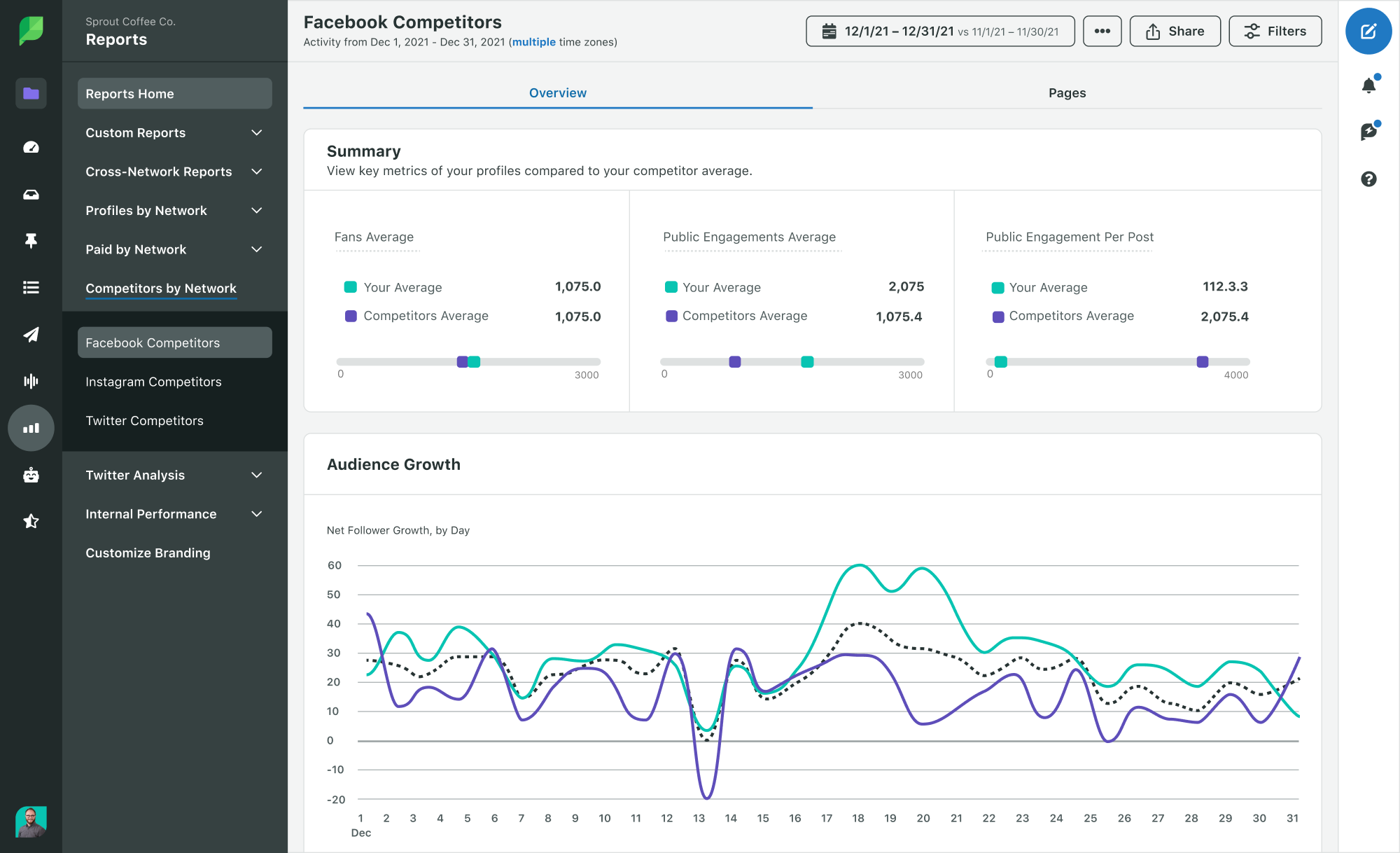
Brand awareness research
Conducting brand awareness research allows you to assess your brand’s standing in the market. It tells you how well-known your brand is among your target audience and what they associate with it. This can help you gauge people’s sentiments toward your brand and whether you need to rebrand or reposition.
If you don’t know where to start with your research, you’re in the right place.
There’s no shortage of market research methods out there. In this section, we’ve highlighted research channels for small and big businesses alike.
Considering that Google sees a staggering 8.5 billion searches each day, there’s perhaps no better place to start.
A quick Google search is a potential goldmine for all sorts of questions to kick off your market research. Who’s ranking for keywords related to your industry? Which products and pieces of content are the hottest right now? Who’s running ads related to your business?
For example, Google Product Listing Ads can help highlight all of the above for B2C brands.

The same applies to B2B brands looking to keep tabs on who’s running industry-related ads and ranking for keyword terms too.

There’s no denying that email represents both an aggressive and effective marketing channel for marketers today. Case in point, 44% of online shoppers consider email as the most influential channel in their buying decisions.
Looking through industry and competitor emails is a brilliant way to learn more about your market. For example, what types of offers and deals are your competitors running? How often are they sending emails?

Email is also invaluable for gathering information directly from your customers. This survey message from Asana is a great example of how to pick your customers’ brains to figure out how you can improve your quality of service.

Industry journals, reports and blogs
Don’t neglect the importance of big-picture market research when it comes to tactics and marketing channels to explore. Look to marketing resources such as reports and blogs as well as industry journals
Keeping your ear to the ground on new trends and technologies is a smart move for any business. Sites such as Statista, Marketing Charts, AdWeek and Emarketer are treasure troves of up-to-date data and news for marketers.
And of course, there’s the Sprout Insights blog . And invaluable resources like The Sprout Social Index™ can keep you updated on the latest social trends.
Social media
If you want to learn more about your target market, look no further than social media. Social offers a place to discover what your customers want to see in future products or which brands are killin’ it. In fact, social media is become more important for businesses than ever with the level of data available.
It represents a massive repository of real-time data and insights that are instantly accessible. Brand monitoring and social listening are effective ways to conduct social media research . You can even be more direct with your approach. Ask questions directly or even poll your audience to understand their needs and preferences.

The 5 steps for how to do market research
Now that we’ve covered the why and where, it’s time to get into the practical aspects of market research. Here are five essential steps on how to do market research effectively.
Step 1: Identify your research topic
First off, what are you researching about? What do you want to find out? Narrow down on a specific research topic so you can start with a clear idea of what to look for.
For example, you may want to learn more about how well your product features are satisfying the needs of existing users. This might potentially lead to feature updates and improvements. Or it might even result in new feature introductions.
Similarly, your research topic may be related to your product or service launch or customer experience. Or you may want to conduct research for an upcoming marketing campaign.
Step 2: Choose a buyer persona to engage
If you’re planning to focus your research on a specific type of audience, decide which buyer persona you want to engage. This persona group will serve as a representative sample of your target audience.
Engaging a specific group of audience lets you streamline your research efforts. As such, it can be a much more effective and organized approach than researching thousands (if not millions) of individuals.
You may be directing your research toward existing users of your product. To get even more granular, you may want to focus on users who have been familiar with the product for at least a year, for example.
Step 3: Start collecting data
The next step is one of the most critical as it involves collecting the data you need for your research. Before you begin, make sure you’ve chosen the right research methods that will uncover the type of data you need. This largely depends on your research topic and goals.
Remember that you don’t necessarily have to stick to one research method. You may use a combination of qualitative and quantitative approaches. So for example, you could use interviews to supplement the data from your surveys. Or you may stick to insights from your social listening efforts.
To keep things consistent, let’s look at this in the context of the example from earlier. Perhaps you can send out a survey to your existing users asking them a bunch of questions. This might include questions like which features they use the most and how often they use them. You can get them to choose an answer from one to five and collect quantitative data.
Plus, for qualitative insights, you could even include a few open-ended questions with the option to write their answers. For instance, you might ask them if there’s any improvement they wish to see in your product.
Step 4: Analyze results
Once you have all the data you need, it’s time to analyze it keeping your research topic in mind. This involves trying to interpret the data to look for a wider meaning, particularly in relation to your research goal.
So let’s say a large percentage of responses were four or five in the satisfaction rating. This means your existing users are mostly satisfied with your current product features. On the other hand, if the responses were mostly ones and twos, you may look for opportunities to improve. The responses to your open-ended questions can give you further context as to why people are disappointed.
Step 5: Make decisions for your business
Now it’s time to take your findings and turn them into actionable insights for your business. In this final step, you need to decide how you want to move forward with your new market insight.
What did you find in your research that would require action? How can you put those findings to good use?
The market research tools you should be using
To wrap things up, let’s talk about the various tools available to conduct speedy, in-depth market research. These tools are essential for conducting market research faster and more efficiently.
Social listening and analytics
Social analytics tools like Sprout can help you keep track of engagement across social media. This goes beyond your own engagement data but also includes that of your competitors. Considering how quickly social media moves, using a third-party analytics tool is ideal. It allows you to make sense of your social data at a glance and ensure that you’re never missing out on important trends.

Email marketing research tools
Keeping track of brand emails is a good idea for any brand looking to stand out in its audience’s inbox.
Tools such as MailCharts , Really Good Emails and Milled can show you how different brands run their email campaigns.
Meanwhile, tools like Owletter allow you to monitor metrics such as frequency and send-timing. These metrics can help you understand email marketing strategies among competing brands.
Content marketing research
If you’re looking to conduct research on content marketing, tools such as BuzzSumo can be of great help. This tool shows you the top-performing industry content based on keywords. Here you can see relevant industry sites and influencers as well as which brands in your industry are scoring the most buzz. It shows you exactly which pieces of content are ranking well in terms of engagements and shares and on which social networks.

SEO and keyword tracking
Monitoring industry keywords is a great way to uncover competitors. It can also help you discover opportunities to advertise your products via organic search. Tools such as Ahrefs provide a comprehensive keyword report to help you see how your search efforts stack up against the competition.

Competitor comparison template
For the sake of organizing your market research, consider creating a competitive matrix. The idea is to highlight how you stack up side-by-side against others in your market. Use a social media competitive analysis template to track your competitors’ social presence. That way, you can easily compare tactics, messaging and performance. Once you understand your strengths and weaknesses next to your competitors, you’ll find opportunities as well.
Customer persona creator
Finally, customer personas represent a place where all of your market research comes together. You’d need to create a profile of your ideal customer that you can easily refer to. Tools like Xtensio can help in outlining your customer motivations and demographics as you zero in on your target market.

Build a solid market research strategy
Having a deeper understanding of the market gives you leverage in a sea of competitors. Use the steps and market research tools we shared above to build an effective market research strategy.
But keep in mind that the accuracy of your research findings depends on the quality of data collected. Turn to Sprout’s social media analytics tools to uncover heaps of high-quality data across social networks.
- Leveling Up
[Toolkit] Mastering Integrated Marketing Strategy for 2025 and Beyond
- Marketing Disciplines
- Social Media Strategy
Social media RFPs: The best questions to include (plus a template)
Template: Essential Questions to Ask in Your Social Media Management Software RFP
- Team Collaboration
How to build a marketing tech stack that scales your business
- Now on slide
Build and grow stronger relationships on social
Sprout Social helps you understand and reach your audience, engage your community and measure performance with the only all-in-one social media management platform built for connection.

Make informed decisions with the marketing research process
Reading time: about 7 min
Who is your target consumer? What does their buying journey look like? How should you price your new product or service?
Today’s business markets are complex and rapidly evolving. So when answering questions like these, you can’t afford to guess. You need data.
That’s where the marketing research process comes in.
The marketing research process encompasses a number of activities focused on gathering product and consumer data to understand your target customers, validate new product ideas, iterate on existing products, and improve marketing and business decisions.
If you want to understand your customer and set your products and marketing strategies up for success, you need marketing research. But where should you begin? And how can you ensure your efforts lead to actionable insights?
Below we’ll walk you through the 5 main marketing research steps.
What is the marketing research process?
The marketing research process is a series of steps used to plan and conduct research on your target market. This process starts before the research ever begins, and it covers everything needed to make research effective, from planning to conducting to analyzing—all the way to finally presenting the results.
As much as we might want to believe our instincts are always right, that’s simply not the case. Research may back up your gut feeling, but it often reveals new, unexpected facts as well. The marketing research process helps you get all the information you need to make and justify a choice–and even gain a competitive edge.
Types of marketing research
There are multiple ways to conduct marketing research, depending on the question you’re trying to answer or the problem you’re trying to solve. Some marketing research process examples include:
- Customer interviews
- Focus groups
- Competitive analysis
- Surveys or questionnaires
- Observation
Which method you should choose will depend on your objectives.
Benefits of doing market research
In 2018, less than 40% of marketers used consumer research to drive decisions. By 2021, 60% of marketers said they use customer data the majority of the time when making decisions.
Why the jump? Marketers have realized the significant value of the marketing research process and are using it to improve their decision making across the business.
Market research is powerful because it can help solve real problems. The marketing research process helps leaders answer questions and gain insight into their business, such as:
- Why do customers buy certain products or behave a certain way
- What problems do customers have and what pain points the business can address
- What’s trending in the industry and what the competitive landscape looks like
- The level of demand for a type of product or service
- Customer perceptions or opinions on pricing
- Untapped opportunities for product development or marketing
Bottom line? The marketing research process helps your bottom line.
When you understand customer behavior and needs, the market landscape, and your own product performance, you can make better, strategic decisions that drive the business forward.
5 marketing research process steps
There are five basic steps to the marketing research process. The specific execution of these steps will vary based on your company’s specific needs and capabilities, but the outline below provides a good starting point.
1. Define the problem
In this initial step, determine why you need to conduct research in the first place. Once you’ve defined why you need research, decide what kind of information you need and how your team will use that information. This will make it easy to design an appropriate research plan in the next step.
For example, let’s say the business is seeing a drop in sales on one product. Your research question could be “Why are sales for product A dropping?” There could be a few reasons, such as loss of customer interest based on product performance or industry competition. Your marketing research can then be designed around investigating those possibilities.
Pro tip: Consult with decision-makers in your company. You’ll want to be sure that your marketing research adequately addresses their concerns and gives them the information they need to make a decision. Work with them to determine any specific metrics they’ll use to make their decision so you can tailor your research process to include their needs.
2. Develop a research plan
Next, begin outlining your research approach. Develop a hypothesis, and then determine how you will conduct research. There are many ways to gather data, including surveys and focus groups, so it’s important to choose a method that will give you the information you need from the people you care about.
- Your target audience
- The research tools you will use
- Who will be involved in the research process (e.g., customers, internal staff, or both?)
- How you will select research participants
- Your research timeline
- Project resources
If you’re conducting a survey, interviews, or focus group, consider how you will incentivize participants, what kinds of questions you will ask, and how to collect the responses.
3. Collect data
With a research plan in place, you can begin conducting your research. As you do so, ensure that everyone involved in collecting data has received training to do so effectively. You’ll want to supervise and evaluate their efforts throughout the research process to ensure you get quality data.
Make sure to collect and record data in a secure place, preferably using a standardized format, to ensure you have accurate, usable data.
4. Analyze data
As your research concludes, begin data analysis . This step includes editing, coding, or transcribing data as needed to make it readable and manipulatable. Data analysis can take many forms, but it often includes making graphs and tables to spot trends. Remember, your analysis should reveal whether your hypothesis established in step two was correct.
5. Prepare a report
The marketing research process concludes with a presentation of your research. Generally, this takes the form of a written report that includes the initial problem, an outline of the research, and recommendations for how to proceed. This step can also take the form of oral reports or presentations—anything that communicates your research clearly.
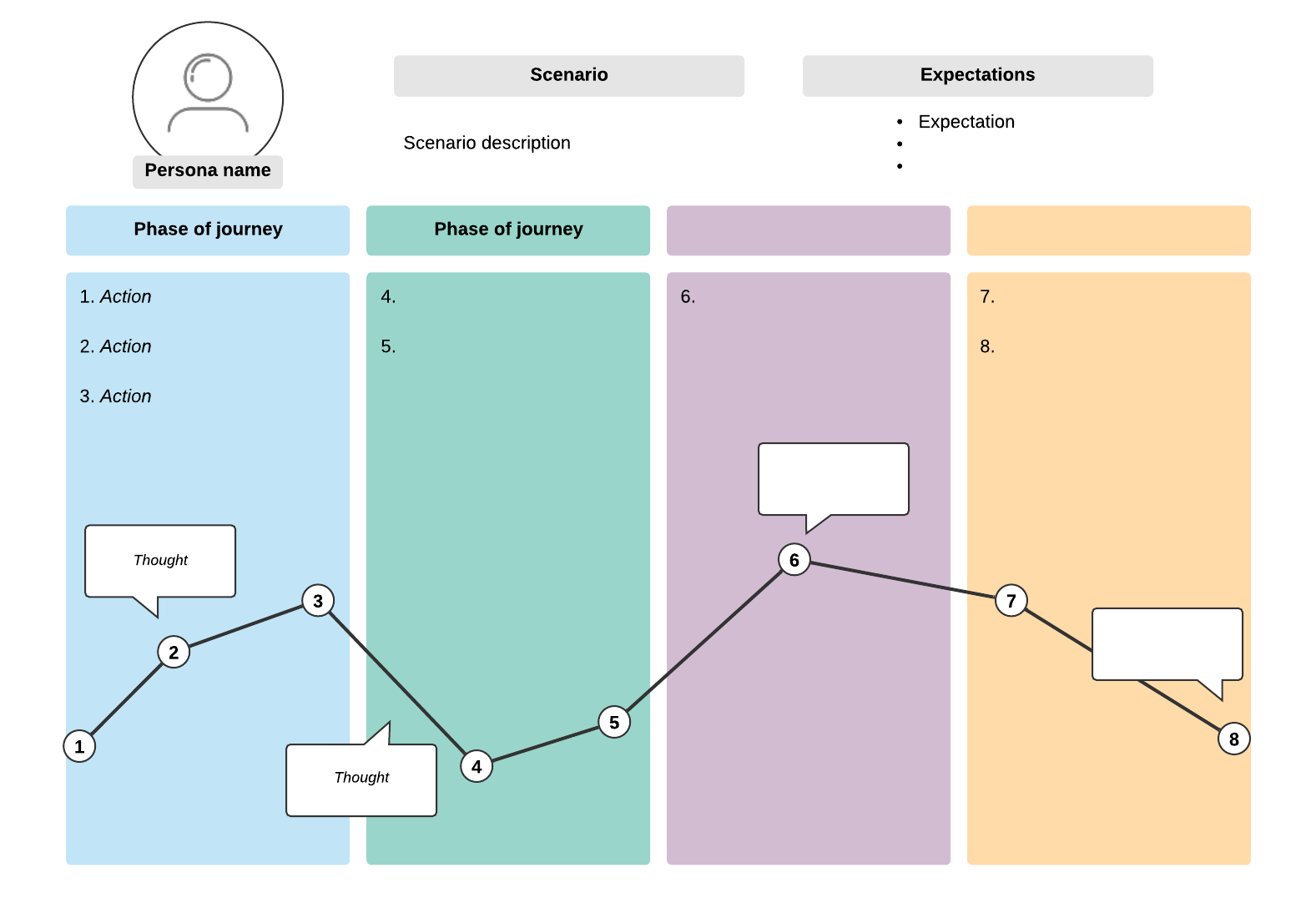
However you present this information, make your report clear and understandable for any individuals who weren’t directly involved in the research process. Give them all the information necessary for decision-making. At this point, your company can take action based on your findings, thus concluding the marketing research process.
Lucidchart and the marketing research process
One size does not fit all when it comes to the marketing research process. While the basic steps are applicable to most organizations, they will often be executed very differently. Your organization needs to personalize your process, and Lucidchart makes it easy to do so.
For example, the formality of the marketing research process varies from company to company. Smaller businesses might conduct casual research with a Google survey. A large company, however, might require carefully selected focus groups and formal questionnaires. With Lucidchart, you can customize your marketing research process to fit your organization’s needs.
Marketing research can play a key role in making the right decisions for your company. Developing your own marketing research process will help you achieve even better results from your data collection and analysis, in turn helping you make more informed choices.

Define your marketing research process today with Lucidchart.
About Lucidchart
Lucidchart, a cloud-based intelligent diagramming application, is a core component of Lucid Software's Visual Collaboration Suite. This intuitive, cloud-based solution empowers teams to collaborate in real-time to build flowcharts, mockups, UML diagrams, customer journey maps, and more. Lucidchart propels teams forward to build the future faster. Lucid is proud to serve top businesses around the world, including customers such as Google, GE, and NBC Universal, and 99% of the Fortune 500. Lucid partners with industry leaders, including Google, Atlassian, and Microsoft. Since its founding, Lucid has received numerous awards for its products, business, and workplace culture. For more information, visit lucidchart.com.
Related articles
Master the 5-step email marketing funnel.
A well-thought-out email marketing funnel and campaign have the power to turn browsers into shoppers and one-time fans into lifelong brand ambassadors.
How to refine your marketing funnel and earn devoted customers
Marketing teams can use the marketing funnel to see how customers find their company and why they choose it. See how to make one in Lucidchart!
How to use storyboarding for marketing and business development
Storyboards are no longer confined to film. Teams organize ideas with storyboards in every industry. Learn how and why.
Bring your bright ideas to life.
or continue with
By registering, you agree to our Terms of Service and you acknowledge that you have read and understand our Privacy Policy .

IMAGES
VIDEO
COMMENTS
Learning Outcomes. By the end of this section, you will be able to: 1 Identify and describe the steps in a marketing research plan. 2 Discuss the different types of data research. 3 Explain how data is analyzed. 4 Discuss the importance of effective research reports.
A market research plan will help you uncover significant issues or roadblocks. Step 1. Conduct a comprehensive situation analysis. One of the first steps in constructing your marketing plan is to create a strengths, weaknesses, opportunities and threats (SWOT) ...
A market research plan, similar to a brief, is a vital document that details important information about your market research project. Though it is often an overlooked step of the market research process, an effective plan is often a critical factor in determining whether or not your market research efforts are successful.
SWOT Analysis Template. A SWOT (Strengths, Weaknesses, Opportunities, Threats) analysis looks at your internal strengths and weaknesses, and your external opportunities and threats within the market. A SWOT analysis highlights direct areas of opportunity your company can continue, build, focus on, and work to overcome.
Interviews. Customer interviews are one of the most effective market research methods out there. It's a great way for business owners to get first-party data from their customers and get insights into how they are doing in real time. 7. Focus groups. Focus groups are a great way to get data on a specific demographic.
A well-designed market research survey can help you determine whether you need to: Enter a new market. Launch a new product or service. Promote brand awareness. Optimize your marketing campaign. Improve customer service. Change messaging perception of your product or service. Adjust price points.
Example 2: McDonald's global expansion. McDonald's successful global expansion strategy demonstrates the importance of market research when expanding into new territories. Before entering a new market, McDonald's conducts thorough research to understand local tastes, preferences and cultural nuances.
Successful marketing research is done by following a detailed step-by-step plan. FAQ #3: What are the steps in the marketing research process? The recommended core five steps in the marketing research process are: define the problem or opportunity, develop your marketing research plan, collect relevant data and information, analyze data and ...
Step 2: Choose a buyer persona to engage. If you're planning to focus your research on a specific type of audience, decide which buyer persona you want to engage. This persona group will serve as a representative sample of your target audience.
The marketing research process is a series of steps used to plan and conduct research on your target market. This process starts before the research ever begins, and it covers everything needed to make research effective, from planning to conducting to analyzing—all the way to finally presenting the results.